HDSTox

5-HTP
5-Hydroxytryptophan (5-HTP), also known as oxitriptan, is a naturally occurring amino acid and chemical precursor as wel...
Source: Wikipedia.org
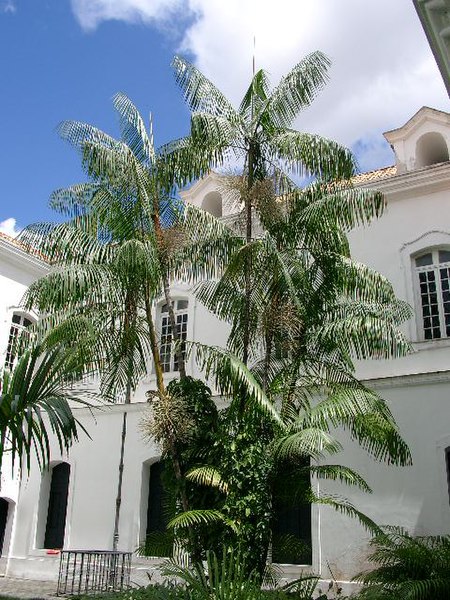
Acai
The açaí palm (, Portuguese: [asaˈi] (listen), from Nheengatu asai), Euterpe oleracea, is a species of palm tree (Arecac...
Source: Wikipedia.org

Activated Charcoal
Activated carbon, also called activated charcoal, is a form of carbon processed to have small, low-volume pores that inc...
Source: Wikipedia.org

Agnus Castus Fruit
Vitex agnus-castus, also called vitex, chaste tree (or chastetree), chasteberry, Abraham's balm, lilac chastetree, or m...
Source: Wikipedia.org
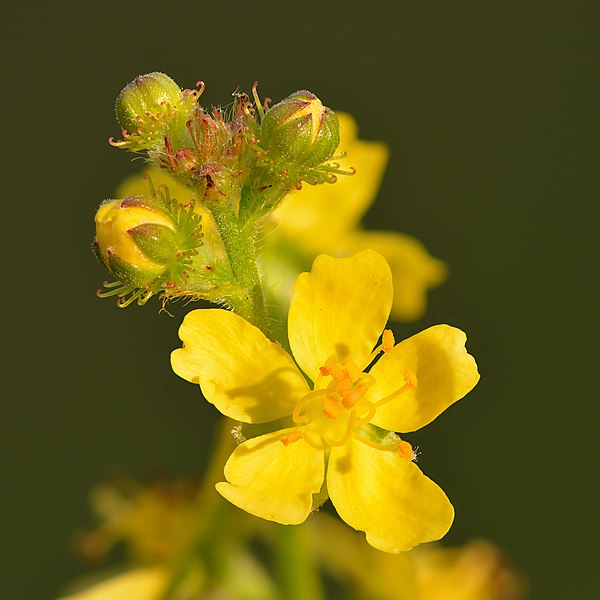
Agrimony
Agrimonia (from the Greek ἀργεμώνη), commonly known as agrimony, is a genus of 12–15 species of perennial herbaceous flo...
Source: Wikipedia.org

Alfalfa
Alfalfa () (Medicago sativa), also called lucerne, is a perennial flowering plant in the legume family Fabaceae. It is c...
Source: Wikipedia.org

Aloe vera extract
Aloe vera ( or ) is a succulent plant species of the genus Aloe. Having some 500 species, Aloe is widely distributed, an...
Source: Wikipedia.org

American ginseng
American ginseng (Panax quinquefolius, Panacis quinquefolis) is a herbaceous perennial plant in the ivy family, commonly...
Source: Wikipedia.org

Anabolic Steroids
Anabolic steroids, also known more properly as anabolic–androgenic steroids (AAS), are steroidal androgens that include ...
Source: Wikipedia.org

Angelica
Angelica pubescens is a plant in the family Apiaceae, native to Japan and China. The Japanese common name is shishiudo a...
Source: Wikipedia.org
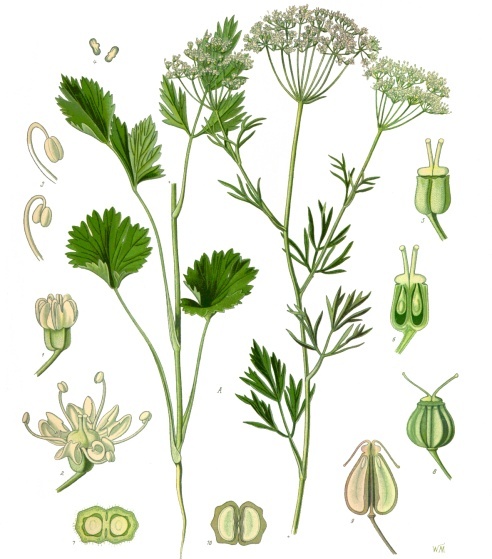
Anise
Anise (, ; Pimpinella anisum), also called aniseed or rarely anix, is a flowering plant in the family Apiaceae native to...
Source: Wikipedia.org

Arctic root
Rhodiola rosea (commonly golden root, rose root, roseroot, Aaron's rod, Arctic root, king's crown, lignum rhodium, orpin...
Source: Wikipedia.org

Aristolochic Acids
Aristolochic acids (English: ) are a family of carcinogenic, mutagenic, and nephrotoxic phytochemicals commonly found in...
Source: Wikipedia.org

Arnica
Arnica is a genus of perennial, herbaceous plants in the sunflower family (Asteraceae). The genus name Arnica may be de...
Source: Wikipedia.org
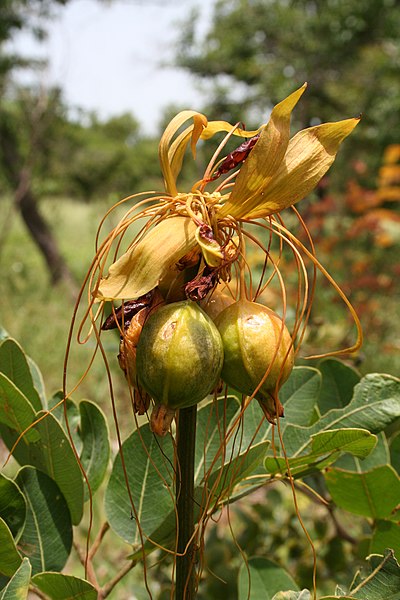
Arrowroot
Tacca leontopetaloides is a species of flowering plant in the yam family Dioscoreaceae. It is native to Island Southeast...
Source: Wikipedia.org
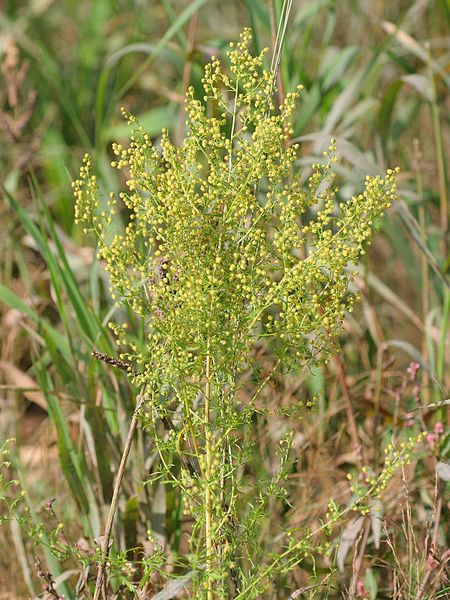
Artemisinin derivatives
Artemisia annua, also known as sweet wormwood, sweet annie, sweet sagewort, annual mugwort or annual wormwood (Chinese: ...
Source: Wikipedia.org

Artichoke
The globe artichoke (Cynara cardunculus var. scolymus), also known by the names French artichoke and green artichoke in ...
Source: Wikipedia.org

Ash
Fraxinus , English name ash, is a genus of flowering plants in the olive and lilac family, Oleaceae. It contains 45–65 s...
Source: Wikipedia.org

Ashwagandha
Withania somnifera, known commonly as ashwagandha, Indian ginseng, poison gooseberry, or winter cherry, is a plant in th...
Source: Wikipedia.org

Asian Ginseng
Panax ginseng, ginseng, also known as Asian ginseng, Chinese ginseng, or Korean ginseng, is a species of plant whose roo...
Source: Wikipedia.org

Astragalus
Astragalus is a large genus of over 3,000 species of herbs and small shrubs, belonging to the legume family Fabaceae and...
Source: Wikipedia.org

Atractylis gummifera
Atractylis is a genus of plants in the daisy family.
SpeciesAtractylis is native to the greater Mediterranean region (s...
Source: Wikipedia.org

Bacillus coagulans
Bacillus coagulans is a lactic acid-forming bacterial species. The organism was first isolated and described as Bacillus...
Source: Wikipedia.org

Bearberry
Arctostaphylos uva-ursi is a plant species of the genus Arctostaphylos widely distributed across circumboreal regions of...
Source: Wikipedia.org
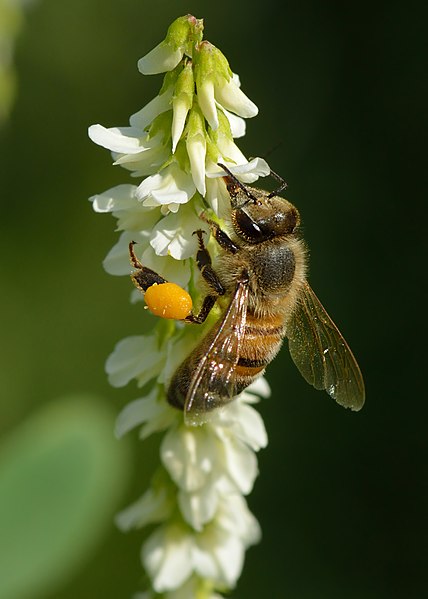
Bee Pollen
Bee pollen, also known as bee bread and ambrosia, is a ball or pellet of field-gathered flower pollen packed by worker h...
Source: Wikipedia.org

Belladonna
Atropa belladonna, commonly known as belladonna or deadly nightshade, is a poisonous perennial herbaceous plant in the n...
Source: Wikipedia.org

Berberine
Berberine is a quaternary ammonium salt from the protoberberine group of benzylisoquinoline alkaloids found in such plan...
Source: Wikipedia.org

Bergamot
Bergamot essential oil is a cold-pressed essential oil produced by cells inside the rind of a bergamot orange fruit. It ...
Source: Wikipedia.org

Beta-carotene
β-Carotene is an organic, strongly coloured red-orange pigment abundant in fungi, plants, and fruits. It is a member of ...
Source: Wikipedia.org

Bifidobacteria
Bifidobacterium is a genus of gram-positive, nonmotile, often branched anaerobic bacteria. They are ubiquitous inhabita...
Source: Wikipedia.org

Bilberry
Bilberries (), or occasionally European blueberries), are a primarily Eurasian species of low-growing shrubs in the genu...
Source: Wikipedia.org

Biotin
Biotin, also called vitamin B7, is one of the B vitamins. It is involved in a wide range of metabolic processes, both in...
Source: Wikipedia.org

Birch
A birch is a thin-leaved deciduous hardwood tree of the genus Betula (), in the family Betulaceae, which also includes a...
Source: Wikipedia.org

Bitter Fennel
Fennel (Foeniculum vulgare) is a flowering plant species in the carrot family. It is a hardy, perennial herb with yellow...
Source: Wikipedia.org

Bitter Melon
Momordica charantia (colloquially: bitter melon; bitter apple; bitter gourd; bitter squash; balsam-pear; with many more ...
Source: Wikipedia.org
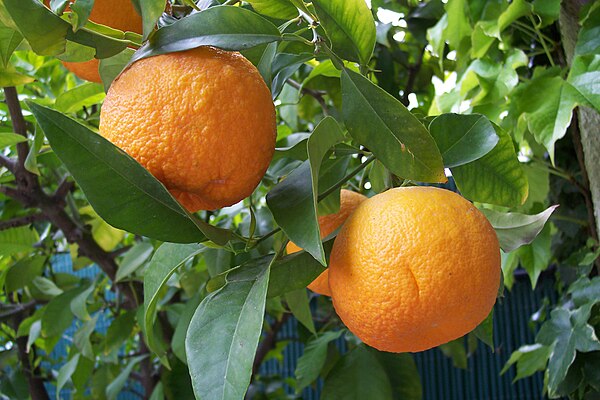
Bitter Orange
Bitter orange, Seville orange, sour orange, bigarade orange, or marmalade orange is the citrus tree Citrus × aurantium a...
Source: Wikipedia.org

Bittersweet Nightshade
Solanum dulcamara is a species of vine in the potato genus Solanum, family Solanaceae. Common names include bittersweet...
Source: Wikipedia.org
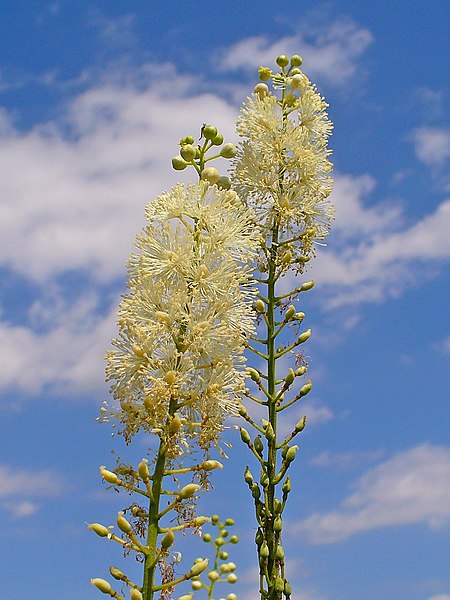
Black Cohosh
Actaea racemosa, the black cohosh, black bugbane, black snakeroot, or fairy candle (syn. Cimicifuga racemosa), is a spec...
Source: Wikipedia.org
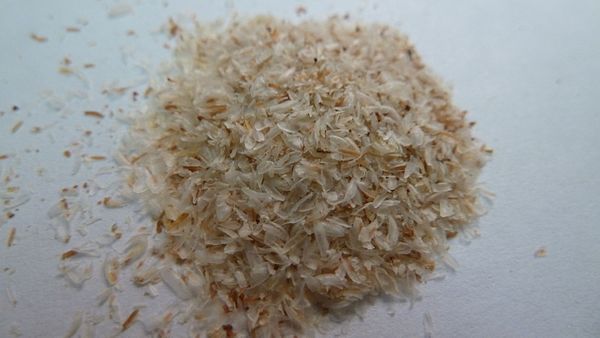
Black psyllium
Psyllium , or ispaghula (isabgol) , is the common name used for several members of the plant genus Plantago whose seeds ...
Source: Wikipedia.org

Black tea
Black tea is a type of tea that is more oxidized than oolong, yellow, white and green teas. Black tea is generally stron...
Source: Wikipedia.org

Blackcurrant
The blackcurrant (Ribes nigrum), also known as black currant or cassis, is a deciduous shrub in the family Grossulariace...
Source: Wikipedia.org

Bladderwrack
Fucus vesiculosus, known by the common names bladder wrack, black tang, rockweed, bladder fucus, sea oak, cut weed, dye...
Source: Wikipedia.org

Blessed thistle
Cnicus benedictus (St. Benedict's thistle, blessed thistle, holy thistle or spotted thistle), is a thistle-like plant in...
Source: Wikipedia.org

Blond psyllium
Plantago ovata, known by many common names including blond plantain, desert Indianwheat, blond psyllium, and isabgol, is...
Source: Wikipedia.org

Blueberry
Blueberries are perennial flowering plants with blue or purple berries. They are classified in the section Cyanococcus w...
Source: Wikipedia.org

Blue-green algae
Cyanobacteria , also known as Cyanophyta, are a phylum of Gram-negative bacteria that obtain energy via photosynthesis. ...
Source: Wikipedia.org

Bogbean
Menyanthes is a monotypic genus of flowering plants in the family Menyanthaceae containing the single species Menyanthes...
Source: Wikipedia.org
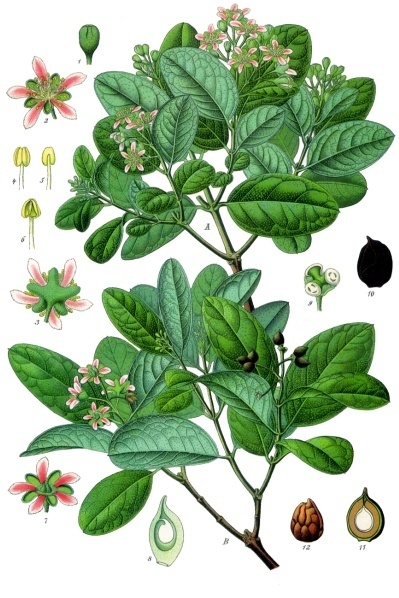
Boldo
"Boldo" is also a settlement in Arauco Province (Chile) named after this tree.
Peumus boldus, the only species in the...
Source: Wikipedia.org

Boron
Boron is a chemical element with the symbol B and atomic number 5. In its crystalline form it is a brittle, dark, lustro...
Source: Wikipedia.org

Bromelain
Bromelain is an enzyme extract derived from the stems of pineapples, although it exists in all parts of the fresh pineap...
Source: Wikipedia.org

Burdock
Arctium is a genus of biennial plants commonly known as burdock, family Asteraceae. Native to Europe and Asia, several s...
Source: Wikipedia.org

Butcher's Broom
Ruscus aculeatus, known as butcher's-broom, is a low evergreen Eurasian shrub, with flat shoots known as cladodes that g...
Source: Wikipedia.org

Butterbur
Petasites is a genus of flowering plants in the sunflower family, Asteraceae, that are commonly referred to as butterbur...
Source: Wikipedia.org

Caffeine
Caffeine is a central nervous system (CNS) stimulant of the methylxanthine class. It is the world's most widely consumed...
Source: Wikipedia.org

Calcium
Calcium is a chemical element with the symbol Ca and atomic number 20. As an alkaline earth metal, calcium is a reactive...
Source: Wikipedia.org

Calendula
Calendula () is a genus of about 15–20 species of annual and perennial herbaceous plants in the daisy family Asteraceae...
Source: Wikipedia.org

California poppy
Eschscholzia californica, the California poppy, golden poppy, California sunlight or cup of gold, is a species of flower...
Source: Wikipedia.org

Camphor
Cinnamomum camphora is a species of evergreen tree that is commonly known under the names camphor tree, camphorwood or c...
Source: Wikipedia.org

Cannabidiol
Cannabidiol (CBD) is a phytocannabinoid discovered in 1940. It is one of 113 identified cannabinoids in cannabis plants,...
Source: Wikipedia.org

Capsicum
Capsicum () is a genus of flowering plants in the nightshade family Solanaceae, native to the Americas, cultivated world...
Source: Wikipedia.org

Caraway
Caraway, also known as meridian fennel and Persian cumin (Carum carvi), is a biennial plant in the family Apiaceae, nati...
Source: Wikipedia.org

Carnitine
Carnitine is a quaternary ammonium compound involved in metabolism in most mammals, plants, and some bacteria. In suppor...
Source: Wikipedia.org

Cartilage
Cartilage (cartilaginous tissue) is a resilient and smooth elastic tissue, rubber-like padding that covers and protects ...
Source: Wikipedia.org

Cascara
Frangula purshiana (cascara, cascara buckthorn, cascara sagrada, bearberry, and in the Chinook Jargon, chittem stick and...
Source: Wikipedia.org

Cassiae semen
Senna obtusifolia, known by the common names Chinese senna, American sicklepod, sicklepod, etc., is a plant in the genus...
Source: Wikipedia.org

Castor
Ricinus communis, the castor bean or castor oil plant, is a species of perennial flowering plant in the spurge family, E...
Source: Wikipedia.org

Cat's Claw
Uncaria tomentosa is a woody vine found in the tropical jungles of South and Central America. It is known as cat's claw ...
Source: Wikipedia.org

Centaury
Centaurium (centaury) is a genus of 20 species in the gentian family (Gentianaceae), tribe Chironieae, subtribe Chironii...
Source: Wikipedia.org

Centella
Centella asiatica, commonly known as Gotu Kola, kodavan, Indian pennywort and Asiatic pennywort, is a herbaceous, perenn...
Source: Wikipedia.org
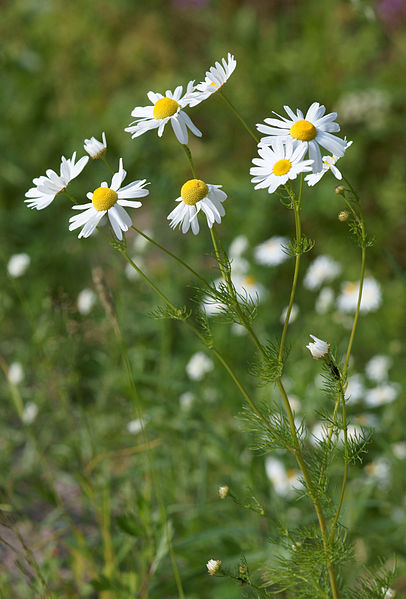
Chamomile
Chamomile (American English) or camomile (British English; see spelling differences) ( KAM-ə-myl or KAM-ə-meel), is the ...
Source: Wikipedia.org

Chaparral
Larrea divaricata, commonly known as chaparral, is a small evergreen bush in the family Zygophyllaceae. It is native to ...
Source: Wikipedia.org

Chasteberry
Vitex agnus-castus, also called vitex, chaste tree (or chastetree), chasteberry, Abraham's balm, lilac chastetree, or m...
Source: Wikipedia.org

Chi R Yun
Breynia vitis-idaea, the officinal breynia, is a perennial tree-like species of Phyllanthaceae (Euphorbiaceae s.l.), fou...
Source: Wikipedia.org

Chicory
Common chicory (Cichorium intybus) is a somewhat woody, perennial herbaceous plant of the daisy family Asteraceae, usual...
Source: Wikipedia.org

Chitosan
Chitosan is a linear polysaccharide composed of randomly distributed β-(1→4)-linked D-glucosamine (deacetylated unit) a...
Source: Wikipedia.org

Choline
Choline is an essential nutrient for humans and many other animals. Choline occurs as a cation that forms various salts...
Source: Wikipedia.org

Chondroitin sulfate
Chondroitin sulfate is a sulfated glycosaminoglycan (GAG) composed of a chain of alternating sugars (N-acetylgalactosami...
Source: Wikipedia.org

Chromium
Chromium is a chemical element with the symbol Cr and atomic number 24. It is the first element in group 6. It is a stee...
Source: Wikipedia.org

Chuan Lian Zi
Melia is a genus of flowering trees in the family Meliaceae. The name is derived from μελία, the Greek name used by Theo...
Source: Wikipedia.org
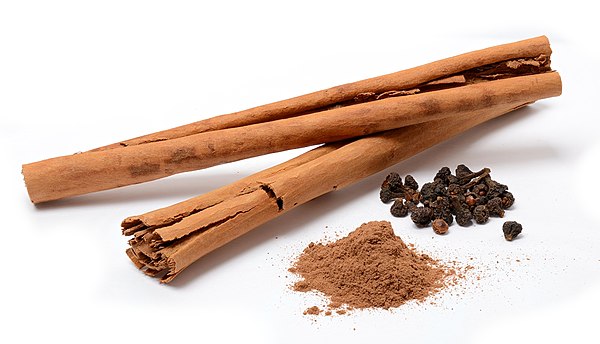
Cinnamon
Cinnamon is a spice obtained from the inner bark of several tree species from the genus Cinnamomum. Cinnamon is used mai...
Source: Wikipedia.org
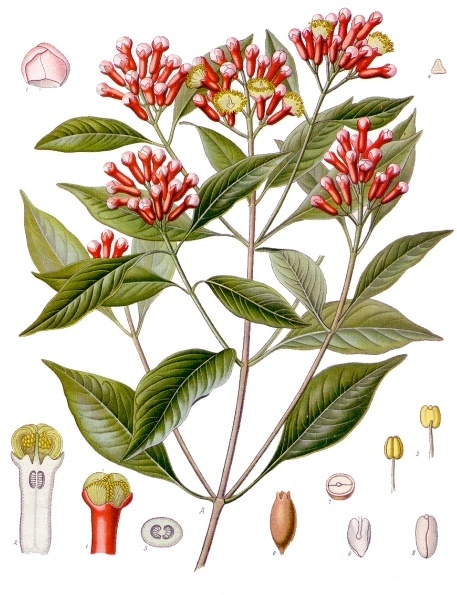
Clove oil
Cloves are the aromatic flower buds of a tree in the family Myrtaceae, Syzygium aromaticum. They are native to the Maluk...
Source: Wikipedia.org
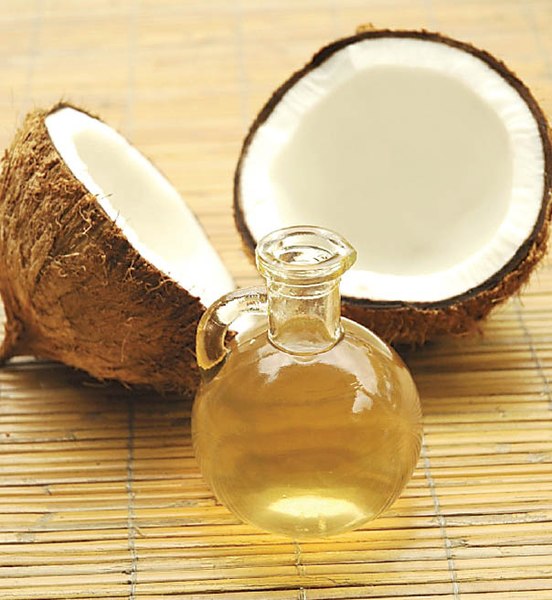
Coconut
Coconut oil (or coconut butter) is an edible oil derived from the wick, meat, and milk of the coconut palm fruit. Coconu...
Source: Wikipedia.org

Cod Liver Oil
Cod liver oil is a dietary supplement derived from liver of cod fish (Gadidae). As with most fish oils, it contains the ...
Source: Wikipedia.org

Coenzyme Q10
Coenzyme Q, also known as ubiquinone, is a coenzyme family that is ubiquitous in animals and most bacteria (hence the na...
Source: Wikipedia.org

Coleus forskohlii
Coleus barbatus, also known by the synonyms Plectranthus barbatus and incorrectly Coleus forskalaei (and other spellings...
Source: Wikipedia.org

Colloidal Silver
The medical uses of silver include its use in wound dressings, creams, and as an antibiotic coating on medical devices. ...
Source: Wikipedia.org

Colpachi
No available text from wiki.
Source: Wikipedia.org

Comfrey
Symphytum officinale is a perennial flowering plant in the family Boraginaceae. Along with thirty four other species of ...
Source: Wikipedia.org

Conjugated linoleic acid
Conjugated linoleic acids (CLA) are a family of at least 28 isomers of linoleic acid found mostly in the meat and dairy ...
Source: Wikipedia.org
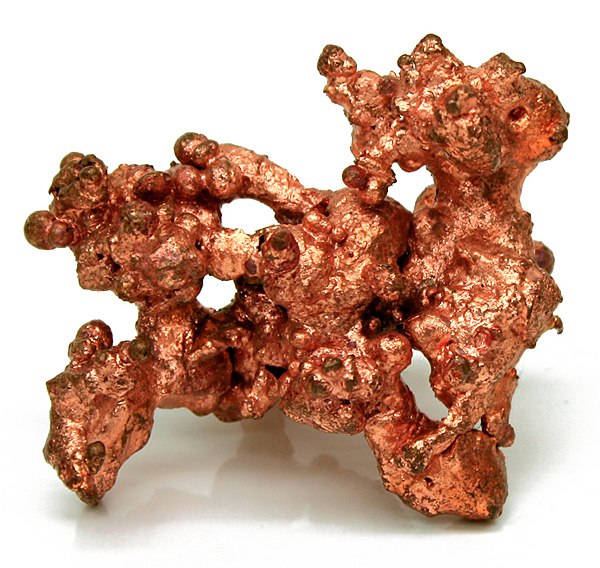
Copper
Copper is a chemical element with the symbol Cu (from Latin: cuprum) and atomic number 29. It is a soft, malleable, and ...
Source: Wikipedia.org

Corydalis
Corydalis (Greek korydalís "crested lark") is a genus of about 470 species of annual and perennial herbaceous plants in ...
Source: Wikipedia.org

Couch grass
Elymus repens, commonly known as couch grass, is a very common perennial species of grass native to most of Europe, Asia...
Source: Wikipedia.org

Cranberry
Cranberries are a group of evergreen dwarf shrubs or trailing vines in the subgenus Oxycoccus of the genus Vaccinium. In...
Source: Wikipedia.org

Creatine
Creatine ( or ) is an organic compound with the nominal formula (H2N)(HN)CN(CH3)CH2CO2H. This species exists in various...
Source: Wikipedia.org

Crofelemer
Crofelemer (USAN, trade name Mytesi) is a botanical drug for the treatment of diarrhea associated with anti-HIV drugs su...
Source: Wikipedia.org

Dandelion
Taraxacum () is a large genus of flowering plants in the family Asteraceae, which consists of species commonly known as ...
Source: Wikipedia.org

Danshen
Salvia miltiorrhiza (Chinese: 丹參; pinyin: dānshēn), also known as red sage, Chinese sage, tan shen, or danshen, is a per...
Source: Wikipedia.org

Deer Velvet
Velvet antler is the whole cartilaginous antler in a precalcified growth stage of the Cervidae family including the spec...
Source: Wikipedia.org

Devil's claw
Harpagophytum ( HAR-pə-GOF-it-əm), also called grapple plant, wood spider, and most commonly devil's claw, is a genus of...
Source: Wikipedia.org

DHEA
Dehydroepiandrosterone (DHEA), also known as androstenolone, is an endogenous steroid hormone precursor. It is one of th...
Source: Wikipedia.org

Dittany of Crete herb
Origanum dictamnus, the dittany of Crete, Cretan dittany or hop marjoram, is a tender perennial plant that grows 20–30 c...
Source: Wikipedia.org
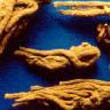
Dong quai
Angelica sinensis, commonly known as dong quai (simplified Chinese: 当归; traditional Chinese: 當歸) or female ginseng, is a...
Source: Wikipedia.org

Echinacea
Echinacea is a genus of herbaceous flowering plants in the daisy family. It has ten species, which are commonly called ...
Source: Wikipedia.org

Ephedra
Ephedra is a medicinal preparation from the plant Ephedra sinica. Several additional species belonging to the genus Eph...
Source: Wikipedia.org

Eucalyptus
Eucalyptus () is a genus of over seven hundred species of flowering trees, shrubs or mallees in the myrtle family, Myrta...
Source: Wikipedia.org

European Elder
Sambucus nigra is a species complex of flowering plants in the family Adoxaceae native to most of Europe and North Ameri...
Source: Wikipedia.org

European Goldenrod
Solidago virgaurea, the European goldenrod or woundwort, is an herbaceous perennial plant of the family Asteraceae. It i...
Source: Wikipedia.org

European Mistletoe
Viscum album is a species of mistletoe in the family Santalaceae, commonly known as European mistletoe, common mistletoe...
Source: Wikipedia.org

Evening Primrose
Oenothera biennis, the common evening-primrose, is a species of flowering plant in the family Onagraceae, native to east...
Source: Wikipedia.org

Eyebright
Euphrasia, or eyebright, is a genus of about 450 species of herbaceous flowering plants in the family Orobanchaceae (for...
Source: Wikipedia.org

Fenugreek
Fenugreek (; Trigonella foenum-graecum) is an annual plant in the family Fabaceae, with leaves consisting of three small...
Source: Wikipedia.org

Feverfew
Tanacetum parthenium, known as feverfew, is a flowering plant in the daisy family, Asteraceae. It may be grown as an orn...
Source: Wikipedia.org

Flavocoxid
Flavocoxid is a medical food consisting of plant derived flavonoids which have anti-inflammatory activity and are used t...
Source: Wikipedia.org

Flaxseed
Flax, also known as common flax or linseed, is a flowering plant, Linum usitatissimum, in the family Linaceae. It is cul...
Source: Wikipedia.org

Fluoride
Fluoride () is an inorganic, monatomic anion of fluorine, with the chemical formula F− (also written [F]−), whose salts ...
Source: Wikipedia.org

Folate
Folate, also known as vitamin B9 and folacin, is one of the B vitamins. Manufactured folic acid, which is converted into...
Source: Wikipedia.org

Frangula
Frangula is a genus of about 35 species of flowering shrubs or small trees, commonly known as alder buckthorn in the buc...
Source: Wikipedia.org

Fucoxanthin
Fucoxanthin is a xanthophyll, with formula C42H58O6. It is found as an accessory pigment in the chloroplasts of brown a...
Source: Wikipedia.org

Fumitory
Fumaria (fumitory or fumewort, from Latin fumus terrae, "smoke of the earth") is a genus of about 60 species of annual f...
Source: Wikipedia.org

Garcinia cambogia
Garcinia gummi-gutta is a tropical species of Garcinia native to Indonesia. Common names include Garcinia cambogia (a fo...
Source: Wikipedia.org
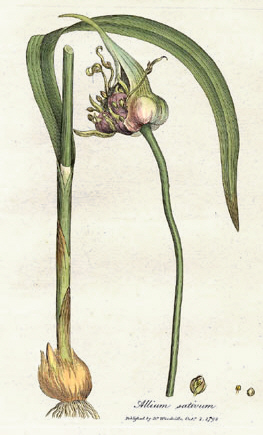
Garlic
Garlic (Allium sativum) is a species of bulbous flowering plant in the onion genus Allium. Its close relatives include t...
Source: Wikipedia.org

Gelatin
Gelatin or gelatine (from Latin: gelatus meaning "stiff" or "frozen") is a translucent, colorless, flavorless food ingre...
Source: Wikipedia.org

Gentian
Gentiana is a genus of flowering plants belonging to the gentian family (Gentianaceae), the tribe Gentianeae, and the m...
Source: Wikipedia.org

Germander
Teucrium is a cosmopolitan genus of flowering plants in the family Lamiaceae, commonly known as germanders. Plants in th...
Source: Wikipedia.org

Ginger
Ginger (Zingiber officinale) is a flowering plant whose rhizome, ginger root or ginger, is widely used as a spice and a ...
Source: Wikipedia.org

Ginkgo
Ginkgo is a genus of highly unusual non-flowering seed plants. The scientific name is also used as the English name. The...
Source: Wikipedia.org

Glucomannan
Glucomannan is a water-soluble polysaccharide that is considered a dietary fiber. It is a hemicellulose component in the...
Source: Wikipedia.org

Glucosamine
Glucosamine (C6H13NO5) is an amino sugar and a prominent precursor in the biochemical synthesis of glycosylated proteins...
Source: Wikipedia.org

Goji
Goji, goji berry, or wolfberry (Chinese: 枸杞; pinyin: gǒuqǐ), is the fruit of either Lycium barbarum or Lycium chinense,...
Source: Wikipedia.org

Goldenseal
Goldenseal (Hydrastis canadensis), also called orangeroot or yellow puccoon, is a perennial herb in the buttercup family...
Source: Wikipedia.org
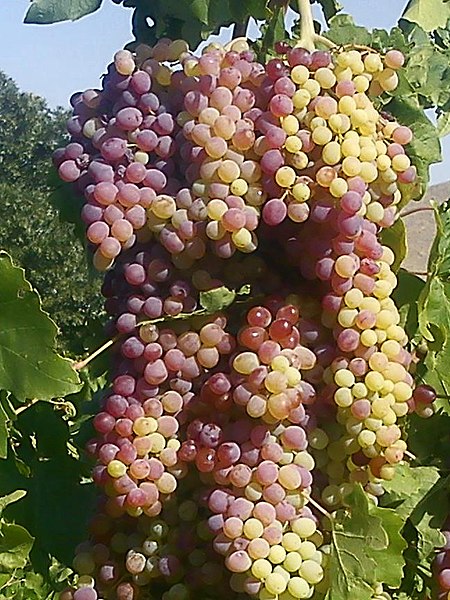
Grape
A grape is a fruit, botanically a berry, of the deciduous woody vines of the flowering plant genus Vitis.
Grapes can b...
Source: Wikipedia.org
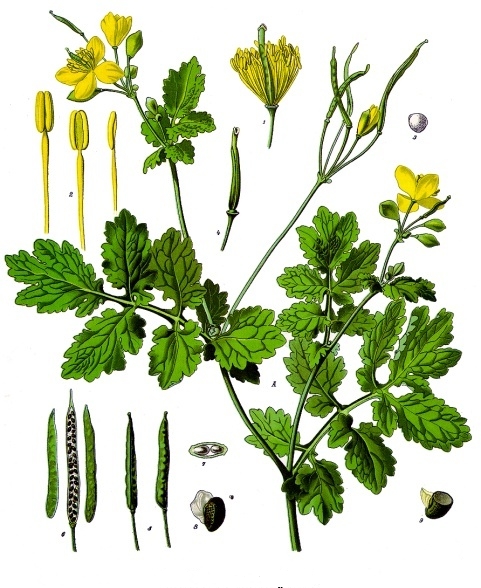
Greater Celandine
Chelidonium majus, the greater celandine, is a perennial herbaceous flowering plant in the poppy family Papaveraceae. On...
Source: Wikipedia.org

Green Coffee
Coffea is a genus of flowering plants in the family Rubiaceae. Coffea species are shrubs or small trees native to tropic...
Source: Wikipedia.org

Green tea extract
Green tea is a type of tea that is made from Camellia sinensis leaves and buds that have not undergone the same witherin...
Source: Wikipedia.org

Guar gum
Guar gum, also called guaran, is a galactomannan polysaccharide extracted from guar beans that has thickening and stabil...
Source: Wikipedia.org
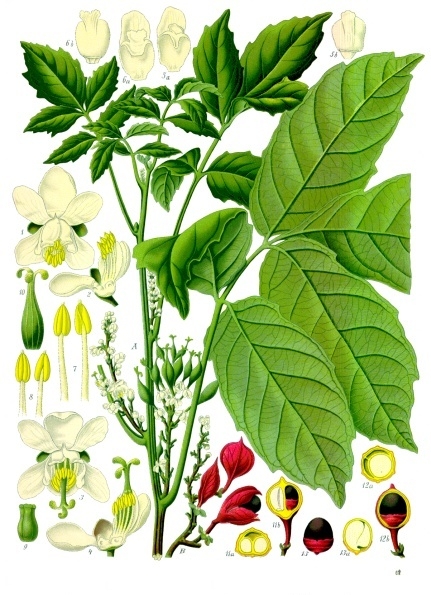
Guarana
Guaraná ( from the Portuguese guaraná [ɡwaɾɐˈna]), Paullinia cupana, syns. P. crysan, P. sorbilis) is a climbing plant i...
Source: Wikipedia.org

Gumweed herb
Grindelia (gumweed) is a genus of plants native to the Americas belonging to the sunflower family. The genus was named f...
Source: Wikipedia.org

Gymnema
Gymnema (Neo-Latin, from Greek γυμνὀς gymnos, "naked" and νῆμα, nēma, "thread") is a genus in the family Apocynaceae fir...
Source: Wikipedia.org

Gynura segetum
Gynura is a genus of flowering plants in the daisy family Asteraceae endemic to Asia. The best known species is Gynura a...
Source: Wikipedia.org

Hamamelis
Witch-hazels or witch hazels (Hamamelis) are a genus of flowering plants in the family Hamamelidaceae, with three specie...
Source: Wikipedia.org

Hawthorn
Crataegus (), commonly called hawthorn, quickthorn, thornapple, May-tree, whitethorn, or hawberry, is a genus of several...
Source: Wikipedia.org

Hedge mustard
Sisymbrium officinale, the hedge mustard, (formerly Erysimum officinale) is a plant in the family Brassicaceae.
Source: Wikipedia.org

Hibiscus
Hibiscus is a genus of flowering plants in the mallow family, Malvaceae. The genus is quite large, comprising several hu...
Source: Wikipedia.org

Honey
Honey is a sweet, viscous food substance made by honey bees and some related insects, such as stingless bees. Bees produ...
Source: Wikipedia.org

Hoodia
Hoodia (; known locally as "ghaap" or "bobbejaanghaap") is a genus of flowering plants in the family Apocynaceae, under...
Source: Wikipedia.org

Hops
Hops are the flowers (also called seed cones or strobiles) of the hop plant Humulus lupulus, a member of the Cannabaceae...
Source: Wikipedia.org

Horny Goat Weed
Epimedium, also known as barrenwort, bishop's hat, fairy wings, horny goat weed, or yin yang huo (Chinese: 淫羊藿), is a ge...
Source: Wikipedia.org

Horse Chestnut
The genus Aesculus ( or ), with varieties called buckeye and horse chestnut, comprises 13–19 species of flowering plants...
Source: Wikipedia.org

Horsetail
Equisetum (; horsetail, snake grass, puzzlegrass) is the only living genus in Equisetaceae, a family of vascular plants ...
Source: Wikipedia.org

Hovenia dulcis
Hovenia dulcis, the Japanese raisin tree or oriental raisin tree, is a hardy tree found from Asia, over Eastern China (萬...
Source: Wikipedia.org

Hydrazine Sulfate
Hydrazine sulfate, more properly hydrazinium hydrogensulfate, is a salt of the cation hydrazinium and the anion bisulfat...
Source: Wikipedia.org

Hyssop
Hyssopus officinalis or hyssop is a shrub in the Lamiaceae or mint family native to Southern Europe, the Middle East, an...
Source: Wikipedia.org

Iceland moss
Cetraria islandica, also known as true Iceland lichen or Iceland moss, is a Iceland lichen whose erect or upright, leafl...
Source: Wikipedia.org

Impila
Callilepis is a genus of flowering plants in the daisy family, Asteraceae. It is native to southern Africa.
SpeciesCall...
Source: Wikipedia.org

Iodine
Iodine is a chemical element with the symbol I and atomic number 53. The heaviest of the stable halogens, it exists as a...
Source: Wikipedia.org

Iron
Iron () is a chemical element with symbol Fe (from Latin: ferrum) and atomic number 26. It is a metal that belongs to th...
Source: Wikipedia.org

Ironwort
Sideritis, also known as ironwort, mountain tea, and shepherd's tea, is a genus of flowering plants well known for their...
Source: Wikipedia.org

Ivy
Hedera helix, the common ivy, English ivy, European ivy, or just ivy, is a species of flowering plant of the ivy genus i...
Source: Wikipedia.org

Java Tea
Orthosiphon stamineus is a herb that is widely grown in tropical areas. It is also known as Orthosiphon aristatus. The ...
Source: Wikipedia.org

Javanese turmeric
Curcuma zanthorrhiza, known as temulawak, Java ginger, Javanese ginger, or Javanese turmeric is a plant species, belongi...
Source: Wikipedia.org

Jin Bu Huan
Huperzia serrata, the toothed clubmoss, is a plant known as a firmoss which contains the acetylcholinesterase inhibitor ...
Source: Wikipedia.org

Juniper
Junipers are coniferous trees and shrubs in the genus Juniperus of the cypress family Cupressaceae. Depending on taxono...
Source: Wikipedia.org

Kalmegh
Andrographis paniculata, commonly known as creat or green chiretta, is an annual herbaceous plant in the family Acanthac...
Source: Wikipedia.org

Katula
Picrorhiza kurroa is one of the major income generating non-timber forest products found in the Nepalese Himalayas. It i...
Source: Wikipedia.org
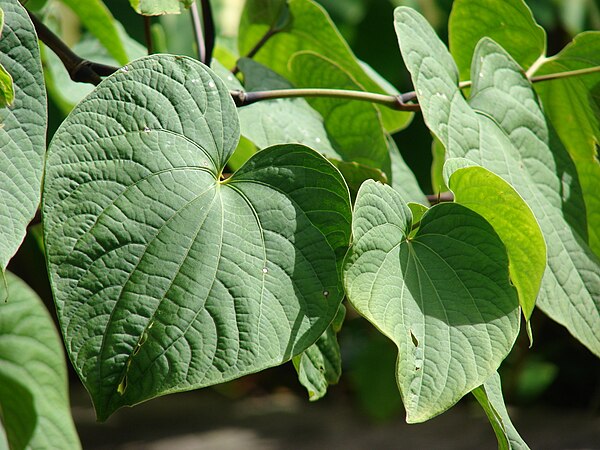
Kava
Kava or kava kava (Piper methysticum: Latin 'pepper' and Latinized Greek 'intoxicating') is a crop of the Pacific Island...
Source: Wikipedia.org

Khat
Khat or qat (Oromo: Jimaa, Somali: Qaad/Khaad, Arabic: القات al-qāt; Amharic: ጫት ch’at) is a flowering plant native to ...
Source: Wikipedia.org

Knotgrass herb
Polygonum aviculare or common knotgrass is a plant related to buckwheat and dock. It is also called prostrate knotweed, ...
Source: Wikipedia.org

Kola nut
The term kola nut usually refers to the seeds of certain species of plant of the genus Cola, placed formerly in the coco...
Source: Wikipedia.org

Kombucha tea
Kombucha (also tea mushroom, tea fungus, or Manchurian mushroom when referring to the culture; Latin name Medusomyces gi...
Source: Wikipedia.org

Kratom
Mitragyna speciosa (commonly known as kratom) is a tropical evergreen tree in the coffee family native to Southeast Asia...
Source: Wikipedia.org

Lactobacillus
Lactobacillus is a genus of Gram-positive, aerotolerant anaerobes or microaerophilic, rod-shaped, non-spore-forming bact...
Source: Wikipedia.org

L-arginine
Arginine, also known as l-arginine (symbol Arg or R), is an α-amino acid that is used in the biosynthesis of proteins. I...
Source: Wikipedia.org

Lavender
Lavandula (common name lavender) is a genus of 47 known species of flowering plants in the mint family, Lamiaceae. It is...
Source: Wikipedia.org

Lemon verbena leaf
Aloysia citrodora, lemon verbena, is a species of flowering plant in the verbena family Verbenaceae, native to South Ame...
Source: Wikipedia.org

Lesser celandine
Ficaria verna, (formerly Ranunculus ficaria L.) commonly known as lesser celandine or pilewort, is a low-growing, hairle...
Source: Wikipedia.org

Licorice Root
Liquorice (British English) or licorice (American English) ( LIK-ər-is(h), ) is the common name of Glycyrrhiza glabra, a...
Source: Wikipedia.org

Lime flower
Tilia is a genus of about 30 species of trees or bushes, native throughout most of the temperate Northern Hemisphere. Th...
Source: Wikipedia.org

Lipase
A lipase (, ) is any enzyme that catalyzes the hydrolysis of fats (lipids). Lipases are a subclass of the esterases.
Li...
Source: Wikipedia.org

Lovage
Lovage (), Levisticum officinale, is a tall perennial plant, the sole species in the genus Levisticum in the family Apia...
Source: Wikipedia.org

L-tryptophan
Tryptophan (symbol Trp or W) is an α-amino acid that is used in the biosynthesis of proteins. Tryptophan contains an α-a...
Source: Wikipedia.org

Lutein
Lutein (; from Latin luteus meaning "yellow") is a xanthophyll and one of 600 known naturally occurring carotenoids. Lut...
Source: Wikipedia.org
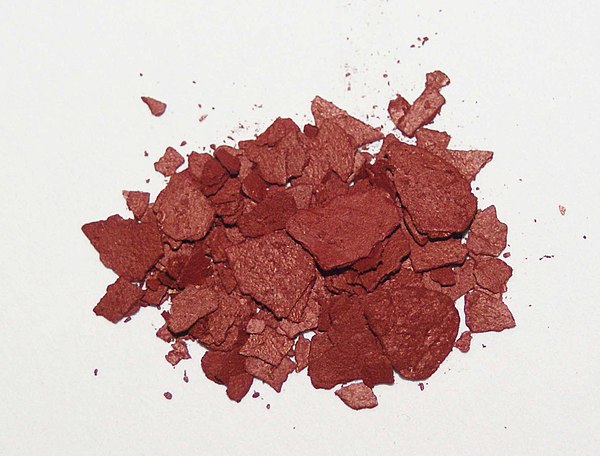
Lycopene
Lycopene (from the neo-Latin Lycopersicum, the tomato species) is a bright red carotenoid hydrocarbon found in tomatoes ...
Source: Wikipedia.org

Maca
Lepidium meyenii, known as maca or Peruvian ginseng, is an edible herbaceous biennial plant of the family Brassicaceae t...
Source: Wikipedia.org

Magnesium
Magnesium is a chemical element with the symbol Mg and atomic number 12. It is a shiny gray solid which bears a close ph...
Source: Wikipedia.org

Majoram
Marjoram (; Origanum majorana) is a cold-sensitive perennial herb or undershrub with sweet pine and citrus flavours. In ...
Source: Wikipedia.org

Malabar-nut
Justicia adhatoda, commonly known in English as Malabar nut, adulsa, adhatoda, vasa, vasaka, (Bengali: বাসক), (Marathi:...
Source: Wikipedia.org

Mallow
Malva sylvestris is a species of the mallow genus Malva in the family of Malvaceae and is considered to be the type spec...
Source: Wikipedia.org

Manganese
Manganese is a chemical element with the symbol Mn and atomic number 25. It is a hard brittle silvery metal, often found...
Source: Wikipedia.org

Mangosteen
Mangosteen (Garcinia mangostana), also known as the purple mangosteen, is a tropical evergreen tree with edible fruit na...
Source: Wikipedia.org

Mao Guo Tian Jie Cai
No available text from wiki.
Source: Wikipedia.org

Marshmallow
Marshmallow (UK: , US: ) is a type of confectionery that is typically made from sugar, water and gelatin whipped to a so...
Source: Wikipedia.org

Mastic tree resin
Mastic (Greek: Μαστίχα) is a resin obtained from the mastic tree (Pistacia lentiscus). It is also known as tears of Chio...
Source: Wikipedia.org

Meadowsweet
Filipendula ulmaria, commonly known as meadowsweet or mead wort, is a perennial herb in the family Rosaceae that grows i...
Source: Wikipedia.org

Melatonin
Melatonin is a hormone primarily released by the pineal gland at night, and has long been associated with control of the...
Source: Wikipedia.org

Melilot
Melilotus officinalis, known as sweet yellow clover, yellow melilot, ribbed melilot and common melilot, is a species of ...
Source: Wikipedia.org

Melissa
Lemon balm (Melissa officinalis) is a perennial herbaceous plant in the mint family and native to south-central Europe, ...
Source: Wikipedia.org

Methylsulfonylmethane
Methylsulfonylmethane (MSM) is an organosulfur compound with the formula (CH3)2SO2. It is also known by several other na...
Source: Wikipedia.org

Milk Thistle
Silybum marianum has other common names including cardus marianus, milk thistle, blessed milkthistle, Marian thistle, Ma...
Source: Wikipedia.org

Motherwort
Leonurus cardiaca, known as motherwort, is an herbaceous perennial plant in the mint family, Lamiaceae. Other common nam...
Source: Wikipedia.org

Mouse-ear hawkweed
Pilosella officinarum (synonym Hieracium pilosella), known as mouse-ear hawkweed, is a yellow-flowered species of flower...
Source: Wikipedia.org

Mullein
Verbascum, common name mullein (), is a genus of about 360 species of flowering plants in the figwort family Scrophulari...
Source: Wikipedia.org
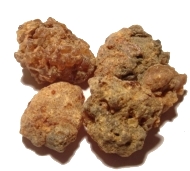
Myrrh
Myrrh (; from Semitic, but see § Etymology) is a gum-resin extracted from a number of small, thorny tree species of the ...
Source: Wikipedia.org

Neem oil
Azadirachta indica, commonly known as neem, nimtree or Indian lilac, is a tree in the mahogany family Meliaceae. It is o...
Source: Wikipedia.org

Nettle
Urtica is a genus of flowering plants in the family Urticaceae. Many species have stinging hairs and may be called nettl...
Source: Wikipedia.org

Noni juice
Morinda citrifolia is a fruit-bearing tree in the coffee family, Rubiaceae. Its native range extends across Southeast As...
Source: Wikipedia.org

Oak Bark
An oak is a tree or shrub in the genus Quercus (; Latin "oak tree") of the beech family, Fagaceae. There are approximate...
Source: Wikipedia.org
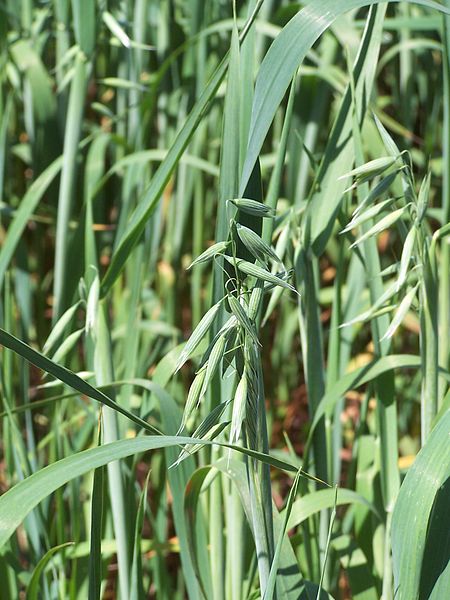
Oats
The oat (Avena sativa), sometimes called the common oat, is a species of cereal grain grown for its seed, which is known...
Source: Wikipedia.org

Olive
The olive, known by the botanical name Olea europaea, meaning "European olive", is a species of small tree in the family...
Source: Wikipedia.org

Omega-3 Fatty Acids
Fish oil is oil derived from the tissues of oily fish. Fish oils contain the omega-3 fatty acids eicosapentaenoic acid (...
Source: Wikipedia.org

Omega-6 Fatty Acids
Omega-6 fatty acids (also referred to as ω-6 fatty acids or n-6 fatty acids) are a family of polyunsaturated fatty acids...
Source: Wikipedia.org

Onion
The onion (Allium cepa L., from Latin cepa "onion"), also known as the bulb onion or common onion, is a vegetable that i...
Source: Wikipedia.org
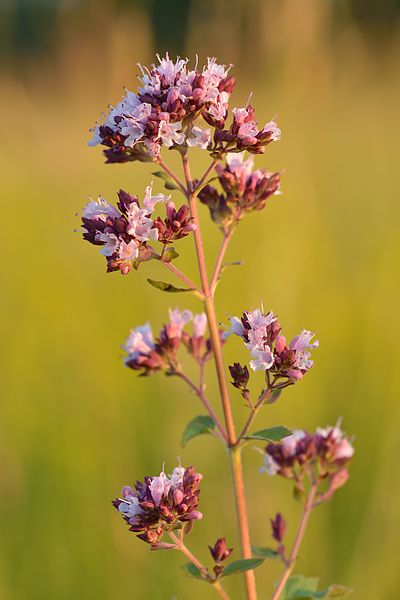
Oregano
Oregano (US: , UK: ; Origanum vulgare) is a species of flowering plant in the mint family Lamiaceae. It was native to th...
Source: Wikipedia.org

Palm Oil
Palm oil is an edible vegetable oil derived from the mesocarp (reddish pulp) of the fruit of the oil palms. The oil is u...
Source: Wikipedia.org

Papaya
The papaya (, US: ) (from Carib via Spanish), papaw, () or pawpaw () is the plant Carica papaya, one of the 22 accepted ...
Source: Wikipedia.org

Passion Flower
Passiflora, known also as the passion flowers or passion vines, is a genus of about 550 species of flowering plants, the...
Source: Wikipedia.org

Pau D'arco
Handroanthus is a genus of flowering plants in the family Bignoniaceae. It consists of 30 species of trees, known in Lat...
Source: Wikipedia.org

Peanut Oil
Peanut oil, also known as groundnut oil or arachis oil, is a vegetable oil derived from peanuts. The oil usually has a m...
Source: Wikipedia.org

Pelargonium root
Pelargonium is a genus of flowering plants which includes about 280 species of perennials, succulents, and shrubs, comm...
Source: Wikipedia.org

Pennyroyal oil
Mentha pulegium, commonly (European) pennyroyal, or pennyrile, also called squaw mint, mosquito plant and pudding grass,...
Source: Wikipedia.org

Peony
The peony or paeony is a flowering plant in the genus Paeonia, the only genus in the family Paeoniaceae. Peonies are nat...
Source: Wikipedia.org

Peppermint
Peppermint (Mentha × piperita, also known as Mentha balsamea Wild) is a hybrid mint, a cross between watermint and spear...
Source: Wikipedia.org

Peru balsam
Balsam of Peru or Peru balsam, also known and marketed by many other names, is a balsam derived from a tree known as Myr...
Source: Wikipedia.org

Phosphate salts
In chemistry, a phosphate is an anion, salt, functional group or ester derived from a phosphoric acid. It most commonly...
Source: Wikipedia.org

Phosphorus
Phosphorus is a chemical element with the symbol P and atomic number 15. Elemental phosphorus exists in two major forms,...
Source: Wikipedia.org

Pink rock-rose
Cistus creticus (pink rock-rose, hoary rock-rose) is a species of shrubby plant in the family Cistaceae. Though it usual...
Source: Wikipedia.org

Podophyllum
Podophyllum is an herbaceous perennial plant in the family Berberidaceae, described as a genus by Linnaeus in 1753. In t...
Source: Wikipedia.org

Polygonum multiflorum
Reynoutria multiflora (syn. Fallopia multiflora and Polygonum multiflorum) is a species of flowering plant in the buckwh...
Source: Wikipedia.org

Polypody
Polypodium is a genus of ferns in the family Polypodiaceae, subfamily Polypodioideae, according to the Pteridophyte Phyl...
Source: Wikipedia.org

Pomegranate
The pomegranate (Punica granatum) is a fruit-bearing deciduous shrub in the family Lythraceae, subfamily Punicoideae, th...
Source: Wikipedia.org
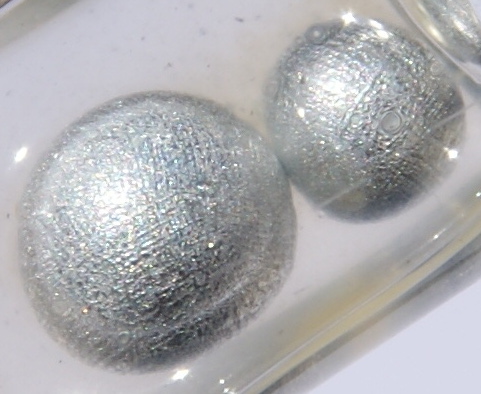
Potassium
Potassium is a chemical element with the symbol K (from Neo-Latin kalium) and atomic number 19. Potassium is a silvery-w...
Source: Wikipedia.org

Primula
Primula is a genus of mainly herbaceous flowering plants in the family Primulaceae. They include the familiar wildflowe...
Source: Wikipedia.org

Probiotics
Probiotics are live microorganisms promoted with claims that they provide health benefits when consumed, generally by im...
Source: Wikipedia.org

Propolis
Propolis or bee glue is a resinous mixture that honey bees produce by mixing saliva and beeswax with exudate gathered fr...
Source: Wikipedia.org

Psoralen
Psoralea corylifolia (Babchi) is a plant used in Indian and Chinese traditional medicine. The seeds of this plant contai...
Source: Wikipedia.org

Pumpkin seed
A pumpkin seed, also known in North America as a pepita (from the Mexican Spanish: pepita de calabaza, "little seed of s...
Source: Wikipedia.org

Pygeum africanum
Prunus africana, the African cherry, has a wide distribution in Africa, occurring in montane regions of central and sout...
Source: Wikipedia.org

Pyruvate
Pyruvic acid (CH3COCOOH) is the simplest of the alpha-keto acids, with a carboxylic acid and a ketone functional group. ...
Source: Wikipedia.org

Raspberry
The raspberry is the edible fruit of a multitude of plant species in the genus Rubus of the rose family, most of which a...
Source: Wikipedia.org

Raspberry Ketone
Raspberry ketone is a natural phenolic compound that is the primary aroma compound of red raspberries.
Source: Wikipedia.org

Red Clover
Trifolium pratense, the red clover, is a herbaceous species of flowering plant in the bean family Fabaceae, native to Eu...
Source: Wikipedia.org

Red Yeast Rice
Monascus purpureus (syn. M. albidus, M. anka, M. araneosus, M. major, M. rubiginosus, and M. vini; simplified Chinese: 红...
Source: Wikipedia.org

Reishi Mushroom
Lingzhi, Ganoderma lingzhi, also known as reishi, is a polypore fungus ("bracket fungus") belonging to the genus Ganoder...
Source: Wikipedia.org

Restharrow
Ononis spinosa is a plant belonging to the family Fabaceae, that is commonly known as spiny restharrow or just restharro...
Source: Wikipedia.org

Resveratrol
Resveratrol (3,5,4′-trihydroxy-trans-stilbene) is a stilbenoid, a type of natural phenol, and a phytoalexin produced by ...
Source: Wikipedia.org

Rhubarb
Rhubarb is the fleshy, edible stalks (petioles) of species and hybrids (culinary rhubarb) of Rheum in the family Polygon...
Source: Wikipedia.org
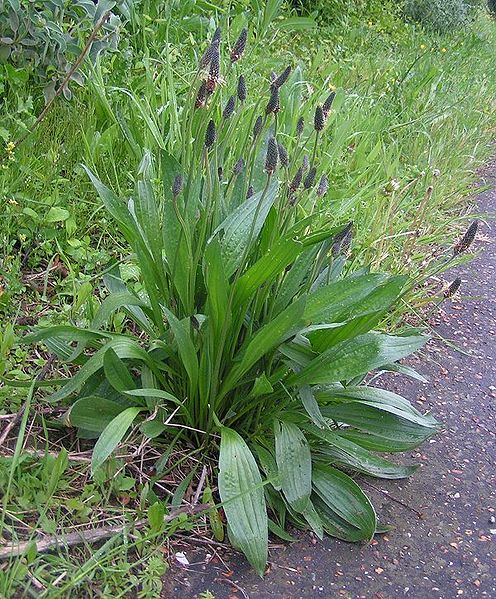
Ribwort Plantain
Plantago lanceolata is a species of flowering plant in the plantain family Plantaginaceae. It is known by the common nam...
Source: Wikipedia.org

Roman chamomile
Chamaemelum nobile, commonly known as chamomile (also spelled camomile), is a low perennial plant found in dry fields an...
Source: Wikipedia.org

Rose Hip
The rose hip or rosehip, also called rose haw and rose hep, is the accessory fruit of the rose plant. It is typically re...
Source: Wikipedia.org

Rosemary
Salvia rosmarinus, commonly known as rosemary, is a shrub with fragrant, evergreen, needle-like leaves and white, pink, ...
Source: Wikipedia.org

Saccharomyces boulardii
Saccharomyces boulardii is a tropical yeast first isolated from lychee and mangosteen fruit in 1923 by French scientist ...
Source: Wikipedia.org

Sage
Salvia officinalis, the common sage or just sage, is a perennial, evergreen subshrub, with woody stems, grayish leaves, ...
Source: Wikipedia.org

SAMe
S-Adenosyl methionine (SAM-e) is a common cosubstrate involved in methyl group transfers, transsulfuration, and aminopro...
Source: Wikipedia.org
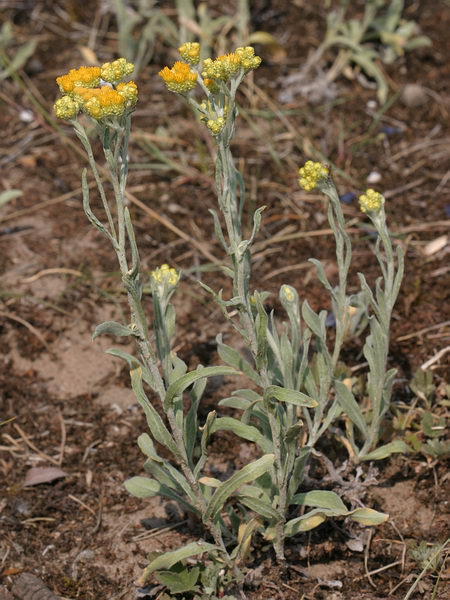
Sandy everlasting
Helichrysum arenarium is also known as dwarf everlast, and as immortelle.
Source: Wikipedia.org

Sassafras
Sassafras albidum (sassafras, white sassafras, red sassafras, or silky sassafras) is a species of Sassafras native to ea...
Source: Wikipedia.org

Saw Palmetto
Serenoa repens, commonly known as saw palmetto, is the sole species currently classified in the genus Serenoa. It is a s...
Source: Wikipedia.org

Selenium
Selenium is a chemical element with the symbol Se and atomic number 34. It is a nonmetal (more rarely considered a metal...
Source: Wikipedia.org

Senna
Senna, the sennas, is a large genus of flowering plants in the legume family (Fabaceae, subfamily Caesalpinioideae, trib...
Source: Wikipedia.org

Shepherds Purse
Capsella bursa-pastoris, known as shepherd's purse because of its triangular flat fruits, which are purse-like, is a sma...
Source: Wikipedia.org

Siberian Ginseng
Eleutherococcus senticosus is a species of small, woody shrub in the family Araliaceae native to Northeastern Asia. It m...
Source: Wikipedia.org
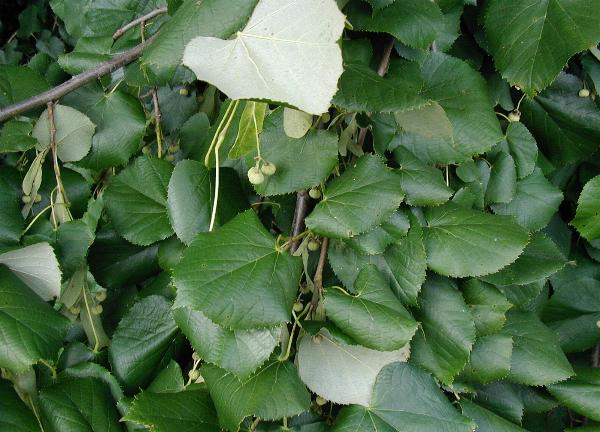
Silver lime flower
Tilia tomentosa, known as silver linden in the US and silver lime in the UK, is a species of flowering plant in the fami...
Source: Wikipedia.org

Skullcap
Scutellaria lateriflora, known commonly as blue skullcap, mad dog skullcap, and side-flowering skullcap, is a hardy pere...
Source: Wikipedia.org

Slippery Elm
Ulmus rubra, the slippery elm, is a species of elm native to eastern North America, ranging from southeast North Dakota,...
Source: Wikipedia.org

Sorrel
Sorrel (Rumex acetosa), also called common sorrel or garden sorrel, is a perennial herbaceous plant in the family Polygo...
Source: Wikipedia.org

Soy
The soybean, soy bean, or soya bean (Glycine max) is a species of legume native to East Asia, widely grown for its edibl...
Source: Wikipedia.org

Spearmint
Spearmint, also known as garden mint, common mint, lamb mint and mackerel mint, is a species of mint, Mentha spicata, na...
Source: Wikipedia.org

St. John's Wort
Hypericum perforatum, known as perforate St John's-wort, is a flowering plant in the family Hypericaceae and the type sp...
Source: Wikipedia.org
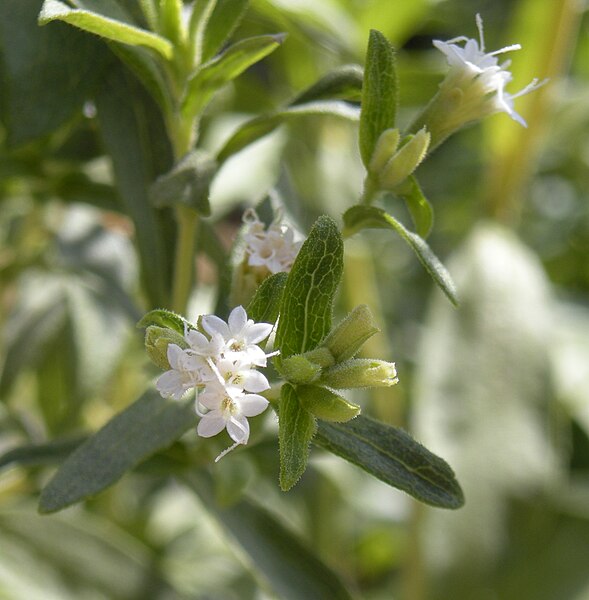
Stevia
Stevia rebaudiana is a plant species in the genus Stevia of the sunflower family (Asteraceae). It is commonly known as c...
Source: Wikipedia.org

Tea Tree Oil
Tea tree oil, also known as melaleuca oil, is an essential oil with a fresh camphoraceous odor and a colour that ranges ...
Source: Wikipedia.org

Three-lobed sage leaf
Salvia fruticosa, or Greek sage, is a perennial herb or sub-shrub native to the eastern Mediterranean, including southe...
Source: Wikipedia.org

Thunder God Vine
Tripterygium wilfordii, or léi gōng téng (Mandarin) (Chinese: 雷公藤, Japanese: raikōtō), sometimes called thunder god vine...
Source: Wikipedia.org

Thyme
Thyme () is the herb (dried aerial parts) of some members of the genus Thymus of aromatic perennial evergreen herbs in t...
Source: Wikipedia.org

Tormentil
Potentilla is a genus containing over 300 species of annual, biennial and perennial herbaceous flowering plants in the ...
Source: Wikipedia.org

Turmeric
Turmeric (pronounced , also or ) is a flowering plant, Curcuma longa of the ginger family, Zingiberaceae, the roots of ...
Source: Wikipedia.org

Vitamin A
Vitamin A is a group of unsaturated nutritional organic compounds that includes retinol, retinal, and several provitamin...
Source: Wikipedia.org

Vitamin B1
Thiamine, also known as thiamin or vitamin B1, is a vitamin found in food and manufactured as a dietary supplement and m...
Source: Wikipedia.org

Vitamin B12
Vitamin B12, also known as cobalamin, is a water-soluble vitamin involved in metabolism. It is one of eight B vitamins. ...
Source: Wikipedia.org

Vitamin B2
Riboflavin, also known as vitamin B2, is a vitamin found in food and used as a dietary supplement. It is required by the...
Source: Wikipedia.org

Vitamin B3
Niacin, also known as nicotinic acid, is an organic compound and a form of vitamin B3, an essential human nutrient. It c...
Source: Wikipedia.org

Vitamin B5
Pantothenic acid, also called vitamin B5 is a water-soluble B vitamin and therefore an essential nutrient. All animals r...
Source: Wikipedia.org

Vitamin C
Vitamin C (also known as ascorbic acid and ascorbate) is a vitamin found in various foods and sold as a dietary suppleme...
Source: Wikipedia.org

Vitamin D
Vitamin D is a group of fat-soluble secosteroids responsible for increasing intestinal absorption of calcium, magnesium,...
Source: Wikipedia.org

Vitamin E
Vitamin E is a group of eight fat soluble compounds that include four tocopherols and four tocotrienols. Vitamin E defic...
Source: Wikipedia.org

Vitamin K
Vitamin K refers to structurally similar, fat-soluble vitamers found in foods and marketed as dietary supplements. The h...
Source: Wikipedia.org

Vitamin B6
Vitamin B6 is one of the B vitamins, and thus an essential nutrient. The term refers to a group of chemically similar co...
Source: Wikipedia.org

Usnic Acid
Usnic acid is a naturally occurring dibenzofuran derivative found in several lichen species with the formula C18H16O7. I...
Source: Wikipedia.org

Whey Protein
Whey protein is a mixture of proteins isolated from whey, the liquid material created as a by-product of cheese producti...
Source: Wikipedia.org

Valerian
Valerian (Valeriana officinalis, Caprifoliaceae) is a perennial flowering plant native to Europe and Asia. In the summer...
Source: Wikipedia.org

Walnut
A walnut is the nut of any tree of the genus Juglans (family Juglandaceae), particularly the Persian or English walnut, ...
Source: Wikipedia.org

White horehound
Marrubium vulgare (white horehound or common horehound) is a flowering plant in the mint family (Lamiaceae), native to E...
Source: Wikipedia.org

White kidney bean
Phaseolus vulgaris, also known as the common bean and French bean, is a herbaceous annual plant grown worldwide for its ...
Source: Wikipedia.org

Wild Pansy
Viola tricolor, also known as wild pansy, Johnny Jump up (though this name is also applied to similar species such as t...
Source: Wikipedia.org

Wild Strawberry
Fragaria vesca, commonly called wild strawberry, woodland strawberry, Alpine strawberry, Carpathian strawberry, European...
Source: Wikipedia.org

Wild yam
Dioscorea villosa is a species of twining tuberous vine which is native to eastern North America. It is commonly known a...
Source: Wikipedia.org

Willow Bark
Willows, also called sallows and osiers, form the genus Salix, are around 400 species of deciduous trees and shrubs, fou...
Source: Wikipedia.org

Willow herb
Chamaenerion angustifolium is a perennial herbaceous flowering plant in the willowherb family Onagraceae. It is known in...
Source: Wikipedia.org
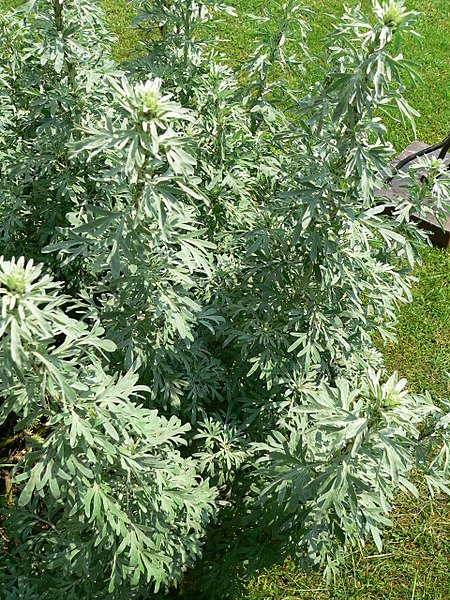
Wormwood
Artemisia absinthium (wormwood, grand wormwood, absinthe, absinthium, absinthe wormwood, mugwort, wermout, wermud, wormi...
Source: Wikipedia.org

Yarrow
Achillea millefolium, commonly known as yarrow () or common yarrow, is a flowering plant in the family Asteraceae. It is...
Source: Wikipedia.org
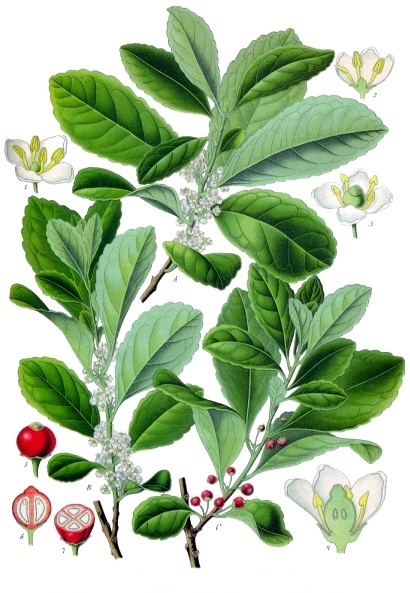
Yerba Mate
Yerba mate or yerba-maté (Ilex paraguariensis; from Spanish [ˈʝeɾβa ˈmate]; Portuguese: erva-mate, Portuguese pronunciat...
Source: Wikipedia.org

Yohimbe
Corynanthe johimbe, common name yohimbe, is a plant species in the family Rubiaceae native to western and central Africa...
Source: Wikipedia.org

Zinc
Zinc is a chemical element with the symbol Zn and atomic number 30. Zinc is a slightly brittle metal at room temperature...
Source: Wikipedia.org

5-HTP
5-Hydroxytryptophan (5-HTP), also known as oxitriptan, is a naturally occurring amino acid and chemical precursor as wel...
Source: Wikipedia.org

Acai
The açaí palm (, Portuguese: [asaˈi] (listen), from Nheengatu asai), Euterpe oleracea, is a species of palm tree (Arecac...
Source: Wikipedia.org

Activated Charcoal
Activated carbon, also called activated charcoal, is a form of carbon processed to have small, low-volume pores that inc...
Source: Wikipedia.org

Agnus Castus Fruit
Vitex agnus-castus, also called vitex, chaste tree (or chastetree), chasteberry, Abraham's balm, lilac chastetree, or m...
Source: Wikipedia.org

Agrimony
Agrimonia (from the Greek ἀργεμώνη), commonly known as agrimony, is a genus of 12–15 species of perennial herbaceous flo...
Source: Wikipedia.org

Alfalfa
Alfalfa () (Medicago sativa), also called lucerne, is a perennial flowering plant in the legume family Fabaceae. It is c...
Source: Wikipedia.org

Aloe vera extract
Aloe vera ( or ) is a succulent plant species of the genus Aloe. Having some 500 species, Aloe is widely distributed, an...
Source: Wikipedia.org

American ginseng
American ginseng (Panax quinquefolius, Panacis quinquefolis) is a herbaceous perennial plant in the ivy family, commonly...
Source: Wikipedia.org

Anabolic Steroids
Anabolic steroids, also known more properly as anabolic–androgenic steroids (AAS), are steroidal androgens that include ...
Source: Wikipedia.org

Angelica
Angelica pubescens is a plant in the family Apiaceae, native to Japan and China. The Japanese common name is shishiudo a...
Source: Wikipedia.org

Anise
Anise (, ; Pimpinella anisum), also called aniseed or rarely anix, is a flowering plant in the family Apiaceae native to...
Source: Wikipedia.org

Arctic root
Rhodiola rosea (commonly golden root, rose root, roseroot, Aaron's rod, Arctic root, king's crown, lignum rhodium, orpin...
Source: Wikipedia.org

Aristolochic Acids
Aristolochic acids (English: ) are a family of carcinogenic, mutagenic, and nephrotoxic phytochemicals commonly found in...
Source: Wikipedia.org

Arnica
Arnica is a genus of perennial, herbaceous plants in the sunflower family (Asteraceae). The genus name Arnica may be de...
Source: Wikipedia.org

Arrowroot
Tacca leontopetaloides is a species of flowering plant in the yam family Dioscoreaceae. It is native to Island Southeast...
Source: Wikipedia.org

Artemisinin derivatives
Artemisia annua, also known as sweet wormwood, sweet annie, sweet sagewort, annual mugwort or annual wormwood (Chinese: ...
Source: Wikipedia.org

Artichoke
The globe artichoke (Cynara cardunculus var. scolymus), also known by the names French artichoke and green artichoke in ...
Source: Wikipedia.org

Ash
Fraxinus , English name ash, is a genus of flowering plants in the olive and lilac family, Oleaceae. It contains 45–65 s...
Source: Wikipedia.org

Ashwagandha
Withania somnifera, known commonly as ashwagandha, Indian ginseng, poison gooseberry, or winter cherry, is a plant in th...
Source: Wikipedia.org

Asian Ginseng
Panax ginseng, ginseng, also known as Asian ginseng, Chinese ginseng, or Korean ginseng, is a species of plant whose roo...
Source: Wikipedia.org

Astragalus
Astragalus is a large genus of over 3,000 species of herbs and small shrubs, belonging to the legume family Fabaceae and...
Source: Wikipedia.org

Atractylis gummifera
Atractylis is a genus of plants in the daisy family. SpeciesAtractylis is native to the greater Mediterranean region (s...
Source: Wikipedia.org

Bacillus coagulans
Bacillus coagulans is a lactic acid-forming bacterial species. The organism was first isolated and described as Bacillus...
Source: Wikipedia.org

Bearberry
Arctostaphylos uva-ursi is a plant species of the genus Arctostaphylos widely distributed across circumboreal regions of...
Source: Wikipedia.org

Bee Pollen
Bee pollen, also known as bee bread and ambrosia, is a ball or pellet of field-gathered flower pollen packed by worker h...
Source: Wikipedia.org

Belladonna
Atropa belladonna, commonly known as belladonna or deadly nightshade, is a poisonous perennial herbaceous plant in the n...
Source: Wikipedia.org

Berberine
Berberine is a quaternary ammonium salt from the protoberberine group of benzylisoquinoline alkaloids found in such plan...
Source: Wikipedia.org

Bergamot
Bergamot essential oil is a cold-pressed essential oil produced by cells inside the rind of a bergamot orange fruit. It ...
Source: Wikipedia.org

Beta-carotene
β-Carotene is an organic, strongly coloured red-orange pigment abundant in fungi, plants, and fruits. It is a member of ...
Source: Wikipedia.org

Bifidobacteria
Bifidobacterium is a genus of gram-positive, nonmotile, often branched anaerobic bacteria. They are ubiquitous inhabita...
Source: Wikipedia.org

Bilberry
Bilberries (), or occasionally European blueberries), are a primarily Eurasian species of low-growing shrubs in the genu...
Source: Wikipedia.org

Biotin
Biotin, also called vitamin B7, is one of the B vitamins. It is involved in a wide range of metabolic processes, both in...
Source: Wikipedia.org

Birch
A birch is a thin-leaved deciduous hardwood tree of the genus Betula (), in the family Betulaceae, which also includes a...
Source: Wikipedia.org

Bitter Fennel
Fennel (Foeniculum vulgare) is a flowering plant species in the carrot family. It is a hardy, perennial herb with yellow...
Source: Wikipedia.org

Bitter Melon
Momordica charantia (colloquially: bitter melon; bitter apple; bitter gourd; bitter squash; balsam-pear; with many more ...
Source: Wikipedia.org

Bitter Orange
Bitter orange, Seville orange, sour orange, bigarade orange, or marmalade orange is the citrus tree Citrus × aurantium a...
Source: Wikipedia.org

Bittersweet Nightshade
Solanum dulcamara is a species of vine in the potato genus Solanum, family Solanaceae. Common names include bittersweet...
Source: Wikipedia.org

Black Cohosh
Actaea racemosa, the black cohosh, black bugbane, black snakeroot, or fairy candle (syn. Cimicifuga racemosa), is a spec...
Source: Wikipedia.org

Black psyllium
Psyllium , or ispaghula (isabgol) , is the common name used for several members of the plant genus Plantago whose seeds ...
Source: Wikipedia.org

Black tea
Black tea is a type of tea that is more oxidized than oolong, yellow, white and green teas. Black tea is generally stron...
Source: Wikipedia.org

Blackcurrant
The blackcurrant (Ribes nigrum), also known as black currant or cassis, is a deciduous shrub in the family Grossulariace...
Source: Wikipedia.org

Bladderwrack
Fucus vesiculosus, known by the common names bladder wrack, black tang, rockweed, bladder fucus, sea oak, cut weed, dye...
Source: Wikipedia.org

Blessed thistle
Cnicus benedictus (St. Benedict's thistle, blessed thistle, holy thistle or spotted thistle), is a thistle-like plant in...
Source: Wikipedia.org

Blond psyllium
Plantago ovata, known by many common names including blond plantain, desert Indianwheat, blond psyllium, and isabgol, is...
Source: Wikipedia.org

Blueberry
Blueberries are perennial flowering plants with blue or purple berries. They are classified in the section Cyanococcus w...
Source: Wikipedia.org

Blue-green algae
Cyanobacteria , also known as Cyanophyta, are a phylum of Gram-negative bacteria that obtain energy via photosynthesis. ...
Source: Wikipedia.org

Bogbean
Menyanthes is a monotypic genus of flowering plants in the family Menyanthaceae containing the single species Menyanthes...
Source: Wikipedia.org

Boldo
"Boldo" is also a settlement in Arauco Province (Chile) named after this tree. Peumus boldus, the only species in the...
Source: Wikipedia.org

Boron
Boron is a chemical element with the symbol B and atomic number 5. In its crystalline form it is a brittle, dark, lustro...
Source: Wikipedia.org

Bromelain
Bromelain is an enzyme extract derived from the stems of pineapples, although it exists in all parts of the fresh pineap...
Source: Wikipedia.org

Burdock
Arctium is a genus of biennial plants commonly known as burdock, family Asteraceae. Native to Europe and Asia, several s...
Source: Wikipedia.org

Butcher's Broom
Ruscus aculeatus, known as butcher's-broom, is a low evergreen Eurasian shrub, with flat shoots known as cladodes that g...
Source: Wikipedia.org

Butterbur
Petasites is a genus of flowering plants in the sunflower family, Asteraceae, that are commonly referred to as butterbur...
Source: Wikipedia.org

Caffeine
Caffeine is a central nervous system (CNS) stimulant of the methylxanthine class. It is the world's most widely consumed...
Source: Wikipedia.org

Calcium
Calcium is a chemical element with the symbol Ca and atomic number 20. As an alkaline earth metal, calcium is a reactive...
Source: Wikipedia.org

Calendula
Calendula () is a genus of about 15–20 species of annual and perennial herbaceous plants in the daisy family Asteraceae...
Source: Wikipedia.org

California poppy
Eschscholzia californica, the California poppy, golden poppy, California sunlight or cup of gold, is a species of flower...
Source: Wikipedia.org

Camphor
Cinnamomum camphora is a species of evergreen tree that is commonly known under the names camphor tree, camphorwood or c...
Source: Wikipedia.org

Cannabidiol
Cannabidiol (CBD) is a phytocannabinoid discovered in 1940. It is one of 113 identified cannabinoids in cannabis plants,...
Source: Wikipedia.org

Capsicum
Capsicum () is a genus of flowering plants in the nightshade family Solanaceae, native to the Americas, cultivated world...
Source: Wikipedia.org

Caraway
Caraway, also known as meridian fennel and Persian cumin (Carum carvi), is a biennial plant in the family Apiaceae, nati...
Source: Wikipedia.org

Carnitine
Carnitine is a quaternary ammonium compound involved in metabolism in most mammals, plants, and some bacteria. In suppor...
Source: Wikipedia.org

Cartilage
Cartilage (cartilaginous tissue) is a resilient and smooth elastic tissue, rubber-like padding that covers and protects ...
Source: Wikipedia.org

Cascara
Frangula purshiana (cascara, cascara buckthorn, cascara sagrada, bearberry, and in the Chinook Jargon, chittem stick and...
Source: Wikipedia.org

Cassiae semen
Senna obtusifolia, known by the common names Chinese senna, American sicklepod, sicklepod, etc., is a plant in the genus...
Source: Wikipedia.org

Castor
Ricinus communis, the castor bean or castor oil plant, is a species of perennial flowering plant in the spurge family, E...
Source: Wikipedia.org

Cat's Claw
Uncaria tomentosa is a woody vine found in the tropical jungles of South and Central America. It is known as cat's claw ...
Source: Wikipedia.org

Centaury
Centaurium (centaury) is a genus of 20 species in the gentian family (Gentianaceae), tribe Chironieae, subtribe Chironii...
Source: Wikipedia.org

Centella
Centella asiatica, commonly known as Gotu Kola, kodavan, Indian pennywort and Asiatic pennywort, is a herbaceous, perenn...
Source: Wikipedia.org

Chamomile
Chamomile (American English) or camomile (British English; see spelling differences) ( KAM-ə-myl or KAM-ə-meel), is the ...
Source: Wikipedia.org

Chaparral
Larrea divaricata, commonly known as chaparral, is a small evergreen bush in the family Zygophyllaceae. It is native to ...
Source: Wikipedia.org

Chasteberry
Vitex agnus-castus, also called vitex, chaste tree (or chastetree), chasteberry, Abraham's balm, lilac chastetree, or m...
Source: Wikipedia.org

Chi R Yun
Breynia vitis-idaea, the officinal breynia, is a perennial tree-like species of Phyllanthaceae (Euphorbiaceae s.l.), fou...
Source: Wikipedia.org

Chicory
Common chicory (Cichorium intybus) is a somewhat woody, perennial herbaceous plant of the daisy family Asteraceae, usual...
Source: Wikipedia.org

Chitosan
Chitosan is a linear polysaccharide composed of randomly distributed β-(1→4)-linked D-glucosamine (deacetylated unit) a...
Source: Wikipedia.org

Choline
Choline is an essential nutrient for humans and many other animals. Choline occurs as a cation that forms various salts...
Source: Wikipedia.org

Chondroitin sulfate
Chondroitin sulfate is a sulfated glycosaminoglycan (GAG) composed of a chain of alternating sugars (N-acetylgalactosami...
Source: Wikipedia.org

Chromium
Chromium is a chemical element with the symbol Cr and atomic number 24. It is the first element in group 6. It is a stee...
Source: Wikipedia.org

Chuan Lian Zi
Melia is a genus of flowering trees in the family Meliaceae. The name is derived from μελία, the Greek name used by Theo...
Source: Wikipedia.org

Cinnamon
Cinnamon is a spice obtained from the inner bark of several tree species from the genus Cinnamomum. Cinnamon is used mai...
Source: Wikipedia.org

Clove oil
Cloves are the aromatic flower buds of a tree in the family Myrtaceae, Syzygium aromaticum. They are native to the Maluk...
Source: Wikipedia.org

Coconut
Coconut oil (or coconut butter) is an edible oil derived from the wick, meat, and milk of the coconut palm fruit. Coconu...
Source: Wikipedia.org

Cod Liver Oil
Cod liver oil is a dietary supplement derived from liver of cod fish (Gadidae). As with most fish oils, it contains the ...
Source: Wikipedia.org

Coenzyme Q10
Coenzyme Q, also known as ubiquinone, is a coenzyme family that is ubiquitous in animals and most bacteria (hence the na...
Source: Wikipedia.org

Coleus forskohlii
Coleus barbatus, also known by the synonyms Plectranthus barbatus and incorrectly Coleus forskalaei (and other spellings...
Source: Wikipedia.org

Colloidal Silver
The medical uses of silver include its use in wound dressings, creams, and as an antibiotic coating on medical devices. ...
Source: Wikipedia.org

Colpachi
No available text from wiki.
Source: Wikipedia.org

Comfrey
Symphytum officinale is a perennial flowering plant in the family Boraginaceae. Along with thirty four other species of ...
Source: Wikipedia.org

Conjugated linoleic acid
Conjugated linoleic acids (CLA) are a family of at least 28 isomers of linoleic acid found mostly in the meat and dairy ...
Source: Wikipedia.org

Copper
Copper is a chemical element with the symbol Cu (from Latin: cuprum) and atomic number 29. It is a soft, malleable, and ...
Source: Wikipedia.org

Corydalis
Corydalis (Greek korydalís "crested lark") is a genus of about 470 species of annual and perennial herbaceous plants in ...
Source: Wikipedia.org

Couch grass
Elymus repens, commonly known as couch grass, is a very common perennial species of grass native to most of Europe, Asia...
Source: Wikipedia.org

Cranberry
Cranberries are a group of evergreen dwarf shrubs or trailing vines in the subgenus Oxycoccus of the genus Vaccinium. In...
Source: Wikipedia.org

Creatine
Creatine ( or ) is an organic compound with the nominal formula (H2N)(HN)CN(CH3)CH2CO2H. This species exists in various...
Source: Wikipedia.org

Crofelemer
Crofelemer (USAN, trade name Mytesi) is a botanical drug for the treatment of diarrhea associated with anti-HIV drugs su...
Source: Wikipedia.org

Dandelion
Taraxacum () is a large genus of flowering plants in the family Asteraceae, which consists of species commonly known as ...
Source: Wikipedia.org

Danshen
Salvia miltiorrhiza (Chinese: 丹參; pinyin: dānshēn), also known as red sage, Chinese sage, tan shen, or danshen, is a per...
Source: Wikipedia.org

Deer Velvet
Velvet antler is the whole cartilaginous antler in a precalcified growth stage of the Cervidae family including the spec...
Source: Wikipedia.org

Devil's claw
Harpagophytum ( HAR-pə-GOF-it-əm), also called grapple plant, wood spider, and most commonly devil's claw, is a genus of...
Source: Wikipedia.org

DHEA
Dehydroepiandrosterone (DHEA), also known as androstenolone, is an endogenous steroid hormone precursor. It is one of th...
Source: Wikipedia.org

Dittany of Crete herb
Origanum dictamnus, the dittany of Crete, Cretan dittany or hop marjoram, is a tender perennial plant that grows 20–30 c...
Source: Wikipedia.org

Dong quai
Angelica sinensis, commonly known as dong quai (simplified Chinese: 当归; traditional Chinese: 當歸) or female ginseng, is a...
Source: Wikipedia.org

Echinacea
Echinacea is a genus of herbaceous flowering plants in the daisy family. It has ten species, which are commonly called ...
Source: Wikipedia.org

Ephedra
Ephedra is a medicinal preparation from the plant Ephedra sinica. Several additional species belonging to the genus Eph...
Source: Wikipedia.org

Eucalyptus
Eucalyptus () is a genus of over seven hundred species of flowering trees, shrubs or mallees in the myrtle family, Myrta...
Source: Wikipedia.org

European Elder
Sambucus nigra is a species complex of flowering plants in the family Adoxaceae native to most of Europe and North Ameri...
Source: Wikipedia.org

European Goldenrod
Solidago virgaurea, the European goldenrod or woundwort, is an herbaceous perennial plant of the family Asteraceae. It i...
Source: Wikipedia.org

European Mistletoe
Viscum album is a species of mistletoe in the family Santalaceae, commonly known as European mistletoe, common mistletoe...
Source: Wikipedia.org

Evening Primrose
Oenothera biennis, the common evening-primrose, is a species of flowering plant in the family Onagraceae, native to east...
Source: Wikipedia.org

Eyebright
Euphrasia, or eyebright, is a genus of about 450 species of herbaceous flowering plants in the family Orobanchaceae (for...
Source: Wikipedia.org

Fenugreek
Fenugreek (; Trigonella foenum-graecum) is an annual plant in the family Fabaceae, with leaves consisting of three small...
Source: Wikipedia.org

Feverfew
Tanacetum parthenium, known as feverfew, is a flowering plant in the daisy family, Asteraceae. It may be grown as an orn...
Source: Wikipedia.org

Flavocoxid
Flavocoxid is a medical food consisting of plant derived flavonoids which have anti-inflammatory activity and are used t...
Source: Wikipedia.org

Flaxseed
Flax, also known as common flax or linseed, is a flowering plant, Linum usitatissimum, in the family Linaceae. It is cul...
Source: Wikipedia.org

Fluoride
Fluoride () is an inorganic, monatomic anion of fluorine, with the chemical formula F− (also written [F]−), whose salts ...
Source: Wikipedia.org

Folate
Folate, also known as vitamin B9 and folacin, is one of the B vitamins. Manufactured folic acid, which is converted into...
Source: Wikipedia.org

Frangula
Frangula is a genus of about 35 species of flowering shrubs or small trees, commonly known as alder buckthorn in the buc...
Source: Wikipedia.org

Fucoxanthin
Fucoxanthin is a xanthophyll, with formula C42H58O6. It is found as an accessory pigment in the chloroplasts of brown a...
Source: Wikipedia.org

Fumitory
Fumaria (fumitory or fumewort, from Latin fumus terrae, "smoke of the earth") is a genus of about 60 species of annual f...
Source: Wikipedia.org

Garcinia cambogia
Garcinia gummi-gutta is a tropical species of Garcinia native to Indonesia. Common names include Garcinia cambogia (a fo...
Source: Wikipedia.org

Garlic
Garlic (Allium sativum) is a species of bulbous flowering plant in the onion genus Allium. Its close relatives include t...
Source: Wikipedia.org

Gelatin
Gelatin or gelatine (from Latin: gelatus meaning "stiff" or "frozen") is a translucent, colorless, flavorless food ingre...
Source: Wikipedia.org

Gentian
Gentiana is a genus of flowering plants belonging to the gentian family (Gentianaceae), the tribe Gentianeae, and the m...
Source: Wikipedia.org

Germander
Teucrium is a cosmopolitan genus of flowering plants in the family Lamiaceae, commonly known as germanders. Plants in th...
Source: Wikipedia.org

Ginger
Ginger (Zingiber officinale) is a flowering plant whose rhizome, ginger root or ginger, is widely used as a spice and a ...
Source: Wikipedia.org

Ginkgo
Ginkgo is a genus of highly unusual non-flowering seed plants. The scientific name is also used as the English name. The...
Source: Wikipedia.org

Glucomannan
Glucomannan is a water-soluble polysaccharide that is considered a dietary fiber. It is a hemicellulose component in the...
Source: Wikipedia.org

Glucosamine
Glucosamine (C6H13NO5) is an amino sugar and a prominent precursor in the biochemical synthesis of glycosylated proteins...
Source: Wikipedia.org

Goji
Goji, goji berry, or wolfberry (Chinese: 枸杞; pinyin: gǒuqǐ), is the fruit of either Lycium barbarum or Lycium chinense,...
Source: Wikipedia.org

Goldenseal
Goldenseal (Hydrastis canadensis), also called orangeroot or yellow puccoon, is a perennial herb in the buttercup family...
Source: Wikipedia.org

Grape
A grape is a fruit, botanically a berry, of the deciduous woody vines of the flowering plant genus Vitis. Grapes can b...
Source: Wikipedia.org

Greater Celandine
Chelidonium majus, the greater celandine, is a perennial herbaceous flowering plant in the poppy family Papaveraceae. On...
Source: Wikipedia.org

Green Coffee
Coffea is a genus of flowering plants in the family Rubiaceae. Coffea species are shrubs or small trees native to tropic...
Source: Wikipedia.org

Green tea extract
Green tea is a type of tea that is made from Camellia sinensis leaves and buds that have not undergone the same witherin...
Source: Wikipedia.org

Guar gum
Guar gum, also called guaran, is a galactomannan polysaccharide extracted from guar beans that has thickening and stabil...
Source: Wikipedia.org

Guarana
Guaraná ( from the Portuguese guaraná [ɡwaɾɐˈna]), Paullinia cupana, syns. P. crysan, P. sorbilis) is a climbing plant i...
Source: Wikipedia.org

Gumweed herb
Grindelia (gumweed) is a genus of plants native to the Americas belonging to the sunflower family. The genus was named f...
Source: Wikipedia.org

Gymnema
Gymnema (Neo-Latin, from Greek γυμνὀς gymnos, "naked" and νῆμα, nēma, "thread") is a genus in the family Apocynaceae fir...
Source: Wikipedia.org

Gynura segetum
Gynura is a genus of flowering plants in the daisy family Asteraceae endemic to Asia. The best known species is Gynura a...
Source: Wikipedia.org

Hamamelis
Witch-hazels or witch hazels (Hamamelis) are a genus of flowering plants in the family Hamamelidaceae, with three specie...
Source: Wikipedia.org

Hawthorn
Crataegus (), commonly called hawthorn, quickthorn, thornapple, May-tree, whitethorn, or hawberry, is a genus of several...
Source: Wikipedia.org

Hedge mustard
Sisymbrium officinale, the hedge mustard, (formerly Erysimum officinale) is a plant in the family Brassicaceae.
Source: Wikipedia.org

Hibiscus
Hibiscus is a genus of flowering plants in the mallow family, Malvaceae. The genus is quite large, comprising several hu...
Source: Wikipedia.org

Honey
Honey is a sweet, viscous food substance made by honey bees and some related insects, such as stingless bees. Bees produ...
Source: Wikipedia.org

Hoodia
Hoodia (; known locally as "ghaap" or "bobbejaanghaap") is a genus of flowering plants in the family Apocynaceae, under...
Source: Wikipedia.org

Hops
Hops are the flowers (also called seed cones or strobiles) of the hop plant Humulus lupulus, a member of the Cannabaceae...
Source: Wikipedia.org

Horny Goat Weed
Epimedium, also known as barrenwort, bishop's hat, fairy wings, horny goat weed, or yin yang huo (Chinese: 淫羊藿), is a ge...
Source: Wikipedia.org

Horse Chestnut
The genus Aesculus ( or ), with varieties called buckeye and horse chestnut, comprises 13–19 species of flowering plants...
Source: Wikipedia.org

Horsetail
Equisetum (; horsetail, snake grass, puzzlegrass) is the only living genus in Equisetaceae, a family of vascular plants ...
Source: Wikipedia.org

Hovenia dulcis
Hovenia dulcis, the Japanese raisin tree or oriental raisin tree, is a hardy tree found from Asia, over Eastern China (萬...
Source: Wikipedia.org

Hydrazine Sulfate
Hydrazine sulfate, more properly hydrazinium hydrogensulfate, is a salt of the cation hydrazinium and the anion bisulfat...
Source: Wikipedia.org

Hyssop
Hyssopus officinalis or hyssop is a shrub in the Lamiaceae or mint family native to Southern Europe, the Middle East, an...
Source: Wikipedia.org

Iceland moss
Cetraria islandica, also known as true Iceland lichen or Iceland moss, is a Iceland lichen whose erect or upright, leafl...
Source: Wikipedia.org

Impila
Callilepis is a genus of flowering plants in the daisy family, Asteraceae. It is native to southern Africa. SpeciesCall...
Source: Wikipedia.org

Iodine
Iodine is a chemical element with the symbol I and atomic number 53. The heaviest of the stable halogens, it exists as a...
Source: Wikipedia.org

Iron
Iron () is a chemical element with symbol Fe (from Latin: ferrum) and atomic number 26. It is a metal that belongs to th...
Source: Wikipedia.org

Ironwort
Sideritis, also known as ironwort, mountain tea, and shepherd's tea, is a genus of flowering plants well known for their...
Source: Wikipedia.org

Ivy
Hedera helix, the common ivy, English ivy, European ivy, or just ivy, is a species of flowering plant of the ivy genus i...
Source: Wikipedia.org

Java Tea
Orthosiphon stamineus is a herb that is widely grown in tropical areas. It is also known as Orthosiphon aristatus. The ...
Source: Wikipedia.org

Javanese turmeric
Curcuma zanthorrhiza, known as temulawak, Java ginger, Javanese ginger, or Javanese turmeric is a plant species, belongi...
Source: Wikipedia.org

Jin Bu Huan
Huperzia serrata, the toothed clubmoss, is a plant known as a firmoss which contains the acetylcholinesterase inhibitor ...
Source: Wikipedia.org

Juniper
Junipers are coniferous trees and shrubs in the genus Juniperus of the cypress family Cupressaceae. Depending on taxono...
Source: Wikipedia.org

Kalmegh
Andrographis paniculata, commonly known as creat or green chiretta, is an annual herbaceous plant in the family Acanthac...
Source: Wikipedia.org

Katula
Picrorhiza kurroa is one of the major income generating non-timber forest products found in the Nepalese Himalayas. It i...
Source: Wikipedia.org

Kava
Kava or kava kava (Piper methysticum: Latin 'pepper' and Latinized Greek 'intoxicating') is a crop of the Pacific Island...
Source: Wikipedia.org

Khat
Khat or qat (Oromo: Jimaa, Somali: Qaad/Khaad, Arabic: القات al-qāt; Amharic: ጫት ch’at) is a flowering plant native to ...
Source: Wikipedia.org

Knotgrass herb
Polygonum aviculare or common knotgrass is a plant related to buckwheat and dock. It is also called prostrate knotweed, ...
Source: Wikipedia.org

Kola nut
The term kola nut usually refers to the seeds of certain species of plant of the genus Cola, placed formerly in the coco...
Source: Wikipedia.org

Kombucha tea
Kombucha (also tea mushroom, tea fungus, or Manchurian mushroom when referring to the culture; Latin name Medusomyces gi...
Source: Wikipedia.org

Kratom
Mitragyna speciosa (commonly known as kratom) is a tropical evergreen tree in the coffee family native to Southeast Asia...
Source: Wikipedia.org

Lactobacillus
Lactobacillus is a genus of Gram-positive, aerotolerant anaerobes or microaerophilic, rod-shaped, non-spore-forming bact...
Source: Wikipedia.org

L-arginine
Arginine, also known as l-arginine (symbol Arg or R), is an α-amino acid that is used in the biosynthesis of proteins. I...
Source: Wikipedia.org

Lavender
Lavandula (common name lavender) is a genus of 47 known species of flowering plants in the mint family, Lamiaceae. It is...
Source: Wikipedia.org

Lemon verbena leaf
Aloysia citrodora, lemon verbena, is a species of flowering plant in the verbena family Verbenaceae, native to South Ame...
Source: Wikipedia.org

Lesser celandine
Ficaria verna, (formerly Ranunculus ficaria L.) commonly known as lesser celandine or pilewort, is a low-growing, hairle...
Source: Wikipedia.org

Licorice Root
Liquorice (British English) or licorice (American English) ( LIK-ər-is(h), ) is the common name of Glycyrrhiza glabra, a...
Source: Wikipedia.org

Lime flower
Tilia is a genus of about 30 species of trees or bushes, native throughout most of the temperate Northern Hemisphere. Th...
Source: Wikipedia.org

Lipase
A lipase (, ) is any enzyme that catalyzes the hydrolysis of fats (lipids). Lipases are a subclass of the esterases. Li...
Source: Wikipedia.org

Lovage
Lovage (), Levisticum officinale, is a tall perennial plant, the sole species in the genus Levisticum in the family Apia...
Source: Wikipedia.org

L-tryptophan
Tryptophan (symbol Trp or W) is an α-amino acid that is used in the biosynthesis of proteins. Tryptophan contains an α-a...
Source: Wikipedia.org

Lutein
Lutein (; from Latin luteus meaning "yellow") is a xanthophyll and one of 600 known naturally occurring carotenoids. Lut...
Source: Wikipedia.org

Lycopene
Lycopene (from the neo-Latin Lycopersicum, the tomato species) is a bright red carotenoid hydrocarbon found in tomatoes ...
Source: Wikipedia.org

Maca
Lepidium meyenii, known as maca or Peruvian ginseng, is an edible herbaceous biennial plant of the family Brassicaceae t...
Source: Wikipedia.org

Magnesium
Magnesium is a chemical element with the symbol Mg and atomic number 12. It is a shiny gray solid which bears a close ph...
Source: Wikipedia.org

Majoram
Marjoram (; Origanum majorana) is a cold-sensitive perennial herb or undershrub with sweet pine and citrus flavours. In ...
Source: Wikipedia.org

Malabar-nut
Justicia adhatoda, commonly known in English as Malabar nut, adulsa, adhatoda, vasa, vasaka, (Bengali: বাসক), (Marathi:...
Source: Wikipedia.org

Mallow
Malva sylvestris is a species of the mallow genus Malva in the family of Malvaceae and is considered to be the type spec...
Source: Wikipedia.org

Manganese
Manganese is a chemical element with the symbol Mn and atomic number 25. It is a hard brittle silvery metal, often found...
Source: Wikipedia.org

Mangosteen
Mangosteen (Garcinia mangostana), also known as the purple mangosteen, is a tropical evergreen tree with edible fruit na...
Source: Wikipedia.org

Mao Guo Tian Jie Cai
No available text from wiki.
Source: Wikipedia.org

Marshmallow
Marshmallow (UK: , US: ) is a type of confectionery that is typically made from sugar, water and gelatin whipped to a so...
Source: Wikipedia.org

Mastic tree resin
Mastic (Greek: Μαστίχα) is a resin obtained from the mastic tree (Pistacia lentiscus). It is also known as tears of Chio...
Source: Wikipedia.org

Meadowsweet
Filipendula ulmaria, commonly known as meadowsweet or mead wort, is a perennial herb in the family Rosaceae that grows i...
Source: Wikipedia.org

Melatonin
Melatonin is a hormone primarily released by the pineal gland at night, and has long been associated with control of the...
Source: Wikipedia.org

Melilot
Melilotus officinalis, known as sweet yellow clover, yellow melilot, ribbed melilot and common melilot, is a species of ...
Source: Wikipedia.org

Melissa
Lemon balm (Melissa officinalis) is a perennial herbaceous plant in the mint family and native to south-central Europe, ...
Source: Wikipedia.org

Methylsulfonylmethane
Methylsulfonylmethane (MSM) is an organosulfur compound with the formula (CH3)2SO2. It is also known by several other na...
Source: Wikipedia.org

Milk Thistle
Silybum marianum has other common names including cardus marianus, milk thistle, blessed milkthistle, Marian thistle, Ma...
Source: Wikipedia.org

Motherwort
Leonurus cardiaca, known as motherwort, is an herbaceous perennial plant in the mint family, Lamiaceae. Other common nam...
Source: Wikipedia.org

Mouse-ear hawkweed
Pilosella officinarum (synonym Hieracium pilosella), known as mouse-ear hawkweed, is a yellow-flowered species of flower...
Source: Wikipedia.org

Mullein
Verbascum, common name mullein (), is a genus of about 360 species of flowering plants in the figwort family Scrophulari...
Source: Wikipedia.org

Myrrh
Myrrh (; from Semitic, but see § Etymology) is a gum-resin extracted from a number of small, thorny tree species of the ...
Source: Wikipedia.org

Neem oil
Azadirachta indica, commonly known as neem, nimtree or Indian lilac, is a tree in the mahogany family Meliaceae. It is o...
Source: Wikipedia.org

Nettle
Urtica is a genus of flowering plants in the family Urticaceae. Many species have stinging hairs and may be called nettl...
Source: Wikipedia.org

Noni juice
Morinda citrifolia is a fruit-bearing tree in the coffee family, Rubiaceae. Its native range extends across Southeast As...
Source: Wikipedia.org

Oak Bark
An oak is a tree or shrub in the genus Quercus (; Latin "oak tree") of the beech family, Fagaceae. There are approximate...
Source: Wikipedia.org

Oats
The oat (Avena sativa), sometimes called the common oat, is a species of cereal grain grown for its seed, which is known...
Source: Wikipedia.org

Olive
The olive, known by the botanical name Olea europaea, meaning "European olive", is a species of small tree in the family...
Source: Wikipedia.org

Omega-3 Fatty Acids
Fish oil is oil derived from the tissues of oily fish. Fish oils contain the omega-3 fatty acids eicosapentaenoic acid (...
Source: Wikipedia.org

Omega-6 Fatty Acids
Omega-6 fatty acids (also referred to as ω-6 fatty acids or n-6 fatty acids) are a family of polyunsaturated fatty acids...
Source: Wikipedia.org

Onion
The onion (Allium cepa L., from Latin cepa "onion"), also known as the bulb onion or common onion, is a vegetable that i...
Source: Wikipedia.org

Oregano
Oregano (US: , UK: ; Origanum vulgare) is a species of flowering plant in the mint family Lamiaceae. It was native to th...
Source: Wikipedia.org

Palm Oil
Palm oil is an edible vegetable oil derived from the mesocarp (reddish pulp) of the fruit of the oil palms. The oil is u...
Source: Wikipedia.org

Papaya
The papaya (, US: ) (from Carib via Spanish), papaw, () or pawpaw () is the plant Carica papaya, one of the 22 accepted ...
Source: Wikipedia.org

Passion Flower
Passiflora, known also as the passion flowers or passion vines, is a genus of about 550 species of flowering plants, the...
Source: Wikipedia.org

Pau D'arco
Handroanthus is a genus of flowering plants in the family Bignoniaceae. It consists of 30 species of trees, known in Lat...
Source: Wikipedia.org

Peanut Oil
Peanut oil, also known as groundnut oil or arachis oil, is a vegetable oil derived from peanuts. The oil usually has a m...
Source: Wikipedia.org

Pelargonium root
Pelargonium is a genus of flowering plants which includes about 280 species of perennials, succulents, and shrubs, comm...
Source: Wikipedia.org

Pennyroyal oil
Mentha pulegium, commonly (European) pennyroyal, or pennyrile, also called squaw mint, mosquito plant and pudding grass,...
Source: Wikipedia.org

Peony
The peony or paeony is a flowering plant in the genus Paeonia, the only genus in the family Paeoniaceae. Peonies are nat...
Source: Wikipedia.org

Peppermint
Peppermint (Mentha × piperita, also known as Mentha balsamea Wild) is a hybrid mint, a cross between watermint and spear...
Source: Wikipedia.org

Peru balsam
Balsam of Peru or Peru balsam, also known and marketed by many other names, is a balsam derived from a tree known as Myr...
Source: Wikipedia.org

Phosphate salts
In chemistry, a phosphate is an anion, salt, functional group or ester derived from a phosphoric acid. It most commonly...
Source: Wikipedia.org

Phosphorus
Phosphorus is a chemical element with the symbol P and atomic number 15. Elemental phosphorus exists in two major forms,...
Source: Wikipedia.org
Pink rock-rose
Cistus creticus (pink rock-rose, hoary rock-rose) is a species of shrubby plant in the family Cistaceae. Though it usual...
Source: Wikipedia.org

Podophyllum
Podophyllum is an herbaceous perennial plant in the family Berberidaceae, described as a genus by Linnaeus in 1753. In t...
Source: Wikipedia.org

Polygonum multiflorum
Reynoutria multiflora (syn. Fallopia multiflora and Polygonum multiflorum) is a species of flowering plant in the buckwh...
Source: Wikipedia.org

Polypody
Polypodium is a genus of ferns in the family Polypodiaceae, subfamily Polypodioideae, according to the Pteridophyte Phyl...
Source: Wikipedia.org

Pomegranate
The pomegranate (Punica granatum) is a fruit-bearing deciduous shrub in the family Lythraceae, subfamily Punicoideae, th...
Source: Wikipedia.org

Potassium
Potassium is a chemical element with the symbol K (from Neo-Latin kalium) and atomic number 19. Potassium is a silvery-w...
Source: Wikipedia.org

Primula
Primula is a genus of mainly herbaceous flowering plants in the family Primulaceae. They include the familiar wildflowe...
Source: Wikipedia.org

Probiotics
Probiotics are live microorganisms promoted with claims that they provide health benefits when consumed, generally by im...
Source: Wikipedia.org

Propolis
Propolis or bee glue is a resinous mixture that honey bees produce by mixing saliva and beeswax with exudate gathered fr...
Source: Wikipedia.org

Psoralen
Psoralea corylifolia (Babchi) is a plant used in Indian and Chinese traditional medicine. The seeds of this plant contai...
Source: Wikipedia.org

Pumpkin seed
A pumpkin seed, also known in North America as a pepita (from the Mexican Spanish: pepita de calabaza, "little seed of s...
Source: Wikipedia.org

Pygeum africanum
Prunus africana, the African cherry, has a wide distribution in Africa, occurring in montane regions of central and sout...
Source: Wikipedia.org

Pyruvate
Pyruvic acid (CH3COCOOH) is the simplest of the alpha-keto acids, with a carboxylic acid and a ketone functional group. ...
Source: Wikipedia.org

Raspberry
The raspberry is the edible fruit of a multitude of plant species in the genus Rubus of the rose family, most of which a...
Source: Wikipedia.org

Raspberry Ketone
Raspberry ketone is a natural phenolic compound that is the primary aroma compound of red raspberries.
Source: Wikipedia.org

Red Clover
Trifolium pratense, the red clover, is a herbaceous species of flowering plant in the bean family Fabaceae, native to Eu...
Source: Wikipedia.org

Red Yeast Rice
Monascus purpureus (syn. M. albidus, M. anka, M. araneosus, M. major, M. rubiginosus, and M. vini; simplified Chinese: 红...
Source: Wikipedia.org

Reishi Mushroom
Lingzhi, Ganoderma lingzhi, also known as reishi, is a polypore fungus ("bracket fungus") belonging to the genus Ganoder...
Source: Wikipedia.org

Restharrow
Ononis spinosa is a plant belonging to the family Fabaceae, that is commonly known as spiny restharrow or just restharro...
Source: Wikipedia.org

Resveratrol
Resveratrol (3,5,4′-trihydroxy-trans-stilbene) is a stilbenoid, a type of natural phenol, and a phytoalexin produced by ...
Source: Wikipedia.org

Rhubarb
Rhubarb is the fleshy, edible stalks (petioles) of species and hybrids (culinary rhubarb) of Rheum in the family Polygon...
Source: Wikipedia.org

Ribwort Plantain
Plantago lanceolata is a species of flowering plant in the plantain family Plantaginaceae. It is known by the common nam...
Source: Wikipedia.org

Roman chamomile
Chamaemelum nobile, commonly known as chamomile (also spelled camomile), is a low perennial plant found in dry fields an...
Source: Wikipedia.org

Rose Hip
The rose hip or rosehip, also called rose haw and rose hep, is the accessory fruit of the rose plant. It is typically re...
Source: Wikipedia.org

Rosemary
Salvia rosmarinus, commonly known as rosemary, is a shrub with fragrant, evergreen, needle-like leaves and white, pink, ...
Source: Wikipedia.org

Saccharomyces boulardii
Saccharomyces boulardii is a tropical yeast first isolated from lychee and mangosteen fruit in 1923 by French scientist ...
Source: Wikipedia.org

Sage
Salvia officinalis, the common sage or just sage, is a perennial, evergreen subshrub, with woody stems, grayish leaves, ...
Source: Wikipedia.org

SAMe
S-Adenosyl methionine (SAM-e) is a common cosubstrate involved in methyl group transfers, transsulfuration, and aminopro...
Source: Wikipedia.org

Sandy everlasting
Helichrysum arenarium is also known as dwarf everlast, and as immortelle.
Source: Wikipedia.org

Sassafras
Sassafras albidum (sassafras, white sassafras, red sassafras, or silky sassafras) is a species of Sassafras native to ea...
Source: Wikipedia.org

Saw Palmetto
Serenoa repens, commonly known as saw palmetto, is the sole species currently classified in the genus Serenoa. It is a s...
Source: Wikipedia.org

Selenium
Selenium is a chemical element with the symbol Se and atomic number 34. It is a nonmetal (more rarely considered a metal...
Source: Wikipedia.org

Senna
Senna, the sennas, is a large genus of flowering plants in the legume family (Fabaceae, subfamily Caesalpinioideae, trib...
Source: Wikipedia.org

Shepherds Purse
Capsella bursa-pastoris, known as shepherd's purse because of its triangular flat fruits, which are purse-like, is a sma...
Source: Wikipedia.org

Siberian Ginseng
Eleutherococcus senticosus is a species of small, woody shrub in the family Araliaceae native to Northeastern Asia. It m...
Source: Wikipedia.org
Silver lime flower
Tilia tomentosa, known as silver linden in the US and silver lime in the UK, is a species of flowering plant in the fami...
Source: Wikipedia.org

Skullcap
Scutellaria lateriflora, known commonly as blue skullcap, mad dog skullcap, and side-flowering skullcap, is a hardy pere...
Source: Wikipedia.org

Slippery Elm
Ulmus rubra, the slippery elm, is a species of elm native to eastern North America, ranging from southeast North Dakota,...
Source: Wikipedia.org

Sorrel
Sorrel (Rumex acetosa), also called common sorrel or garden sorrel, is a perennial herbaceous plant in the family Polygo...
Source: Wikipedia.org

Soy
The soybean, soy bean, or soya bean (Glycine max) is a species of legume native to East Asia, widely grown for its edibl...
Source: Wikipedia.org

Spearmint
Spearmint, also known as garden mint, common mint, lamb mint and mackerel mint, is a species of mint, Mentha spicata, na...
Source: Wikipedia.org

St. John's Wort
Hypericum perforatum, known as perforate St John's-wort, is a flowering plant in the family Hypericaceae and the type sp...
Source: Wikipedia.org

Stevia
Stevia rebaudiana is a plant species in the genus Stevia of the sunflower family (Asteraceae). It is commonly known as c...
Source: Wikipedia.org

Tea Tree Oil
Tea tree oil, also known as melaleuca oil, is an essential oil with a fresh camphoraceous odor and a colour that ranges ...
Source: Wikipedia.org

Three-lobed sage leaf
Salvia fruticosa, or Greek sage, is a perennial herb or sub-shrub native to the eastern Mediterranean, including southe...
Source: Wikipedia.org

Thunder God Vine
Tripterygium wilfordii, or léi gōng téng (Mandarin) (Chinese: 雷公藤, Japanese: raikōtō), sometimes called thunder god vine...
Source: Wikipedia.org

Thyme
Thyme () is the herb (dried aerial parts) of some members of the genus Thymus of aromatic perennial evergreen herbs in t...
Source: Wikipedia.org

Tormentil
Potentilla is a genus containing over 300 species of annual, biennial and perennial herbaceous flowering plants in the ...
Source: Wikipedia.org

Turmeric
Turmeric (pronounced , also or ) is a flowering plant, Curcuma longa of the ginger family, Zingiberaceae, the roots of ...
Source: Wikipedia.org

Vitamin A
Vitamin A is a group of unsaturated nutritional organic compounds that includes retinol, retinal, and several provitamin...
Source: Wikipedia.org

Vitamin B1
Thiamine, also known as thiamin or vitamin B1, is a vitamin found in food and manufactured as a dietary supplement and m...
Source: Wikipedia.org

Vitamin B12
Vitamin B12, also known as cobalamin, is a water-soluble vitamin involved in metabolism. It is one of eight B vitamins. ...
Source: Wikipedia.org

Vitamin B2
Riboflavin, also known as vitamin B2, is a vitamin found in food and used as a dietary supplement. It is required by the...
Source: Wikipedia.org

Vitamin B3
Niacin, also known as nicotinic acid, is an organic compound and a form of vitamin B3, an essential human nutrient. It c...
Source: Wikipedia.org

Vitamin B5
Pantothenic acid, also called vitamin B5 is a water-soluble B vitamin and therefore an essential nutrient. All animals r...
Source: Wikipedia.org

Vitamin C
Vitamin C (also known as ascorbic acid and ascorbate) is a vitamin found in various foods and sold as a dietary suppleme...
Source: Wikipedia.org

Vitamin D
Vitamin D is a group of fat-soluble secosteroids responsible for increasing intestinal absorption of calcium, magnesium,...
Source: Wikipedia.org

Vitamin E
Vitamin E is a group of eight fat soluble compounds that include four tocopherols and four tocotrienols. Vitamin E defic...
Source: Wikipedia.org

Vitamin K
Vitamin K refers to structurally similar, fat-soluble vitamers found in foods and marketed as dietary supplements. The h...
Source: Wikipedia.org

Vitamin B6
Vitamin B6 is one of the B vitamins, and thus an essential nutrient. The term refers to a group of chemically similar co...
Source: Wikipedia.org

Usnic Acid
Usnic acid is a naturally occurring dibenzofuran derivative found in several lichen species with the formula C18H16O7. I...
Source: Wikipedia.org

Whey Protein
Whey protein is a mixture of proteins isolated from whey, the liquid material created as a by-product of cheese producti...
Source: Wikipedia.org

Valerian
Valerian (Valeriana officinalis, Caprifoliaceae) is a perennial flowering plant native to Europe and Asia. In the summer...
Source: Wikipedia.org

Walnut
A walnut is the nut of any tree of the genus Juglans (family Juglandaceae), particularly the Persian or English walnut, ...
Source: Wikipedia.org

White horehound
Marrubium vulgare (white horehound or common horehound) is a flowering plant in the mint family (Lamiaceae), native to E...
Source: Wikipedia.org

White kidney bean
Phaseolus vulgaris, also known as the common bean and French bean, is a herbaceous annual plant grown worldwide for its ...
Source: Wikipedia.org

Wild Pansy
Viola tricolor, also known as wild pansy, Johnny Jump up (though this name is also applied to similar species such as t...
Source: Wikipedia.org

Wild Strawberry
Fragaria vesca, commonly called wild strawberry, woodland strawberry, Alpine strawberry, Carpathian strawberry, European...
Source: Wikipedia.org

Wild yam
Dioscorea villosa is a species of twining tuberous vine which is native to eastern North America. It is commonly known a...
Source: Wikipedia.org

Willow Bark
Willows, also called sallows and osiers, form the genus Salix, are around 400 species of deciduous trees and shrubs, fou...
Source: Wikipedia.org

Willow herb
Chamaenerion angustifolium is a perennial herbaceous flowering plant in the willowherb family Onagraceae. It is known in...
Source: Wikipedia.org

Wormwood
Artemisia absinthium (wormwood, grand wormwood, absinthe, absinthium, absinthe wormwood, mugwort, wermout, wermud, wormi...
Source: Wikipedia.org

Yarrow
Achillea millefolium, commonly known as yarrow () or common yarrow, is a flowering plant in the family Asteraceae. It is...
Source: Wikipedia.org

Yerba Mate
Yerba mate or yerba-maté (Ilex paraguariensis; from Spanish [ˈʝeɾβa ˈmate]; Portuguese: erva-mate, Portuguese pronunciat...
Source: Wikipedia.org

Yohimbe
Corynanthe johimbe, common name yohimbe, is a plant species in the family Rubiaceae native to western and central Africa...
Source: Wikipedia.org

Zinc
Zinc is a chemical element with the symbol Zn and atomic number 30. Zinc is a slightly brittle metal at room temperature...
Source: Wikipedia.org